Venturing Abroad by a Family of Four – Grandparents, Mom, Teenage Daughter
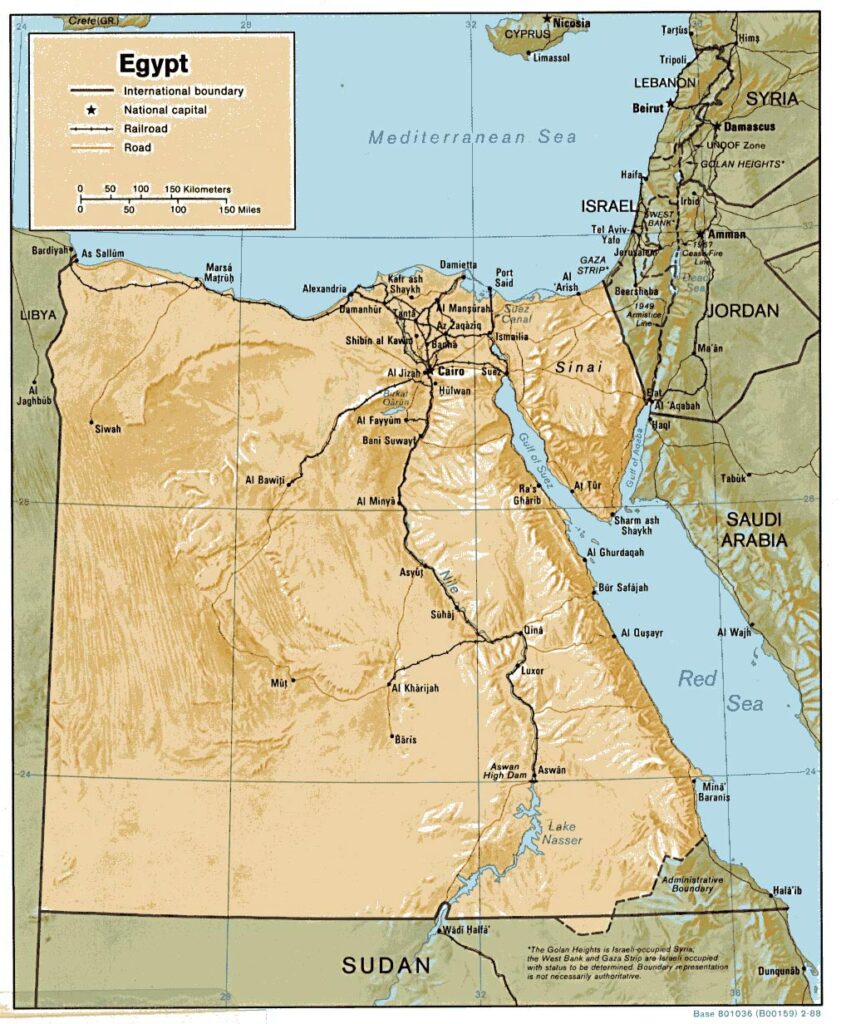
Mumbai – Cairo – Alexandria – Cairo – Aswan – Abu Simbel – Luxor – Hurghada – Cairo – Mumbai
History was always fascinating to us and an interest in great civilizations naturally followed: be it the Roman, the Egyptian, the Indus Valley, the Greek, the Chinese et al. Our inclination therefore was to include this in our agenda on our travels abroad. We thus finalised a 11-day trip to see the wonders of the Egyptian civilization in their own country, having already been brought up on a diet of the grandeur of pyramids and sphinxes, the romance of Ceasars and Cleopatras. Mina El-Mersainly from Sakkara Tours helped plan our detailed schedule. My sister and family decided to join us on this trip, so we were a supportive and fun group of 7, including my young niece and brother-in-law.
Bookings and visas in place, we left for Cairo via Egypt Air at 2:30am on 15th May 2017, landing there the same morning after 6 ½ hours. We were driven to our hotel Le Meridien. We drew the curtains from the windows of our rooms and gasped at our first view of the magnificent pyramids of Giza. It was stunning!
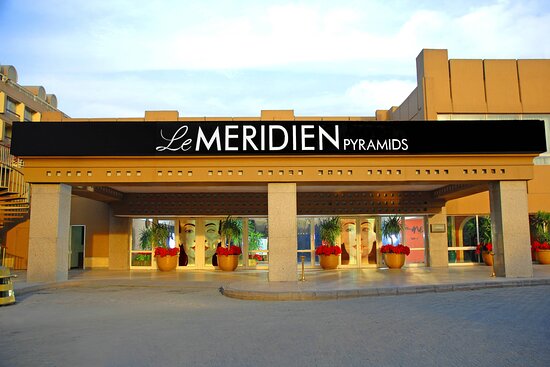
After freshening up we drove out to Giza to see one of the seven wonders of the ancient world. The Great Pyramid serving as a tomb for pharaoh Khufu (or Cheops) was 146 metres high and the largest in the Giza pyramid complex. It was built in 2570 BC over a period of 27 years. The pyramids were topped with gold peaks that were stolen over the centuries, our guide and Egyptologist, Yousef Fouad, explained. It was a wonder how the massive stones at the base of the pyramid were arranged in perfect cohesion with smaller ones at the top to form the gigantic pyramid.
We bought tickets to go inside the pyramid. Amma and Appa waited outside with Yousef while the rest climbed steep steps in the dark, crawling through narrow spaces, to finally reach the burial chamber of the pharaoh. The rectangular stone casket was there and we stood in silence in front of it. We crawled back down, our girls thrilled with this adventure. The second largest was the pyramid of Khafre, son of Khufu, and the smallest, that of Menkaure, his grandson. All of us, including Amma and Appa, entered the tomb of Hetepheres, Queen of Egypt and mother of Khufu. We climbed down dark steps and saw her burial chamber. We then wandered around the complex, digesting all we had seen and heard.
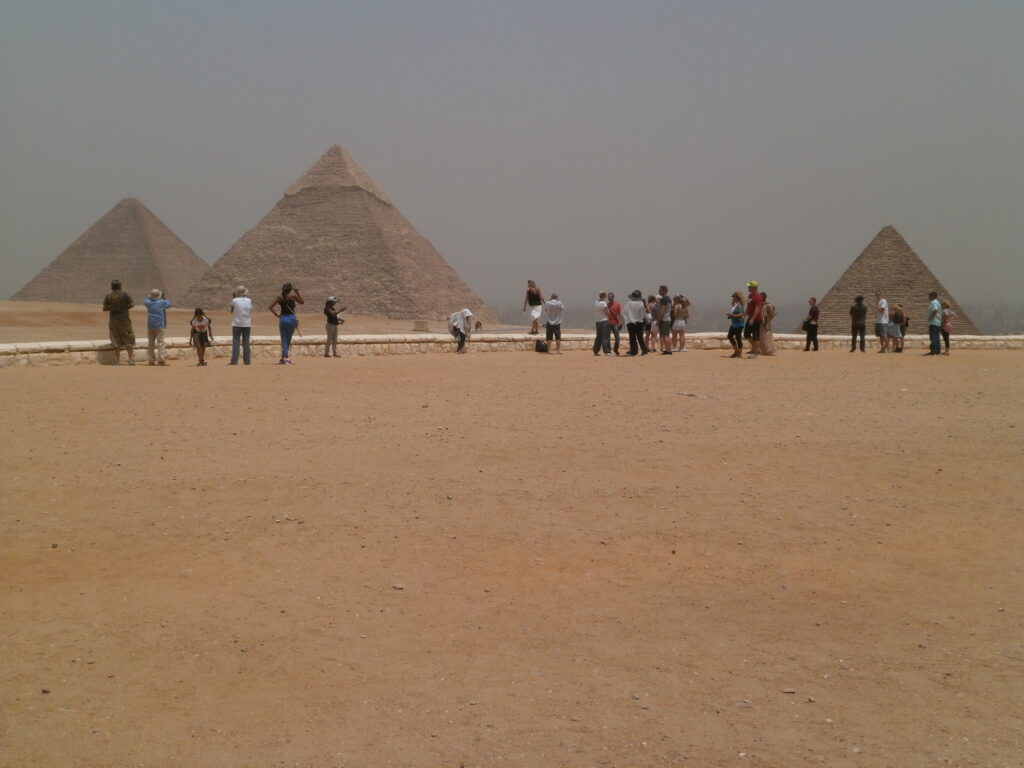
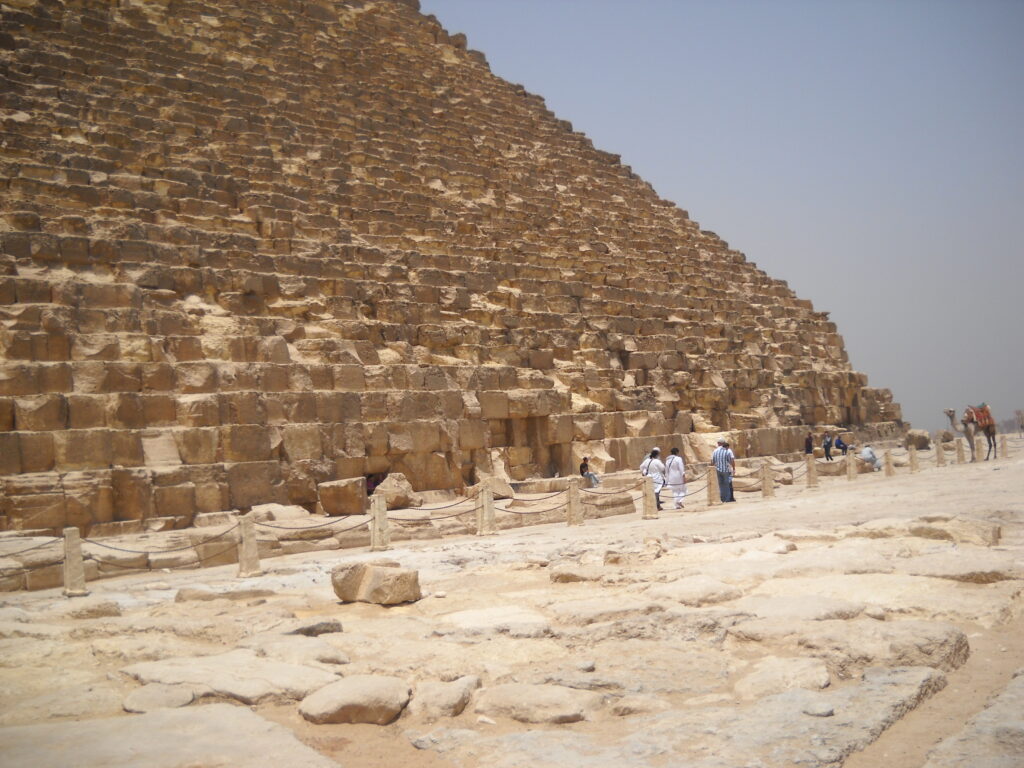
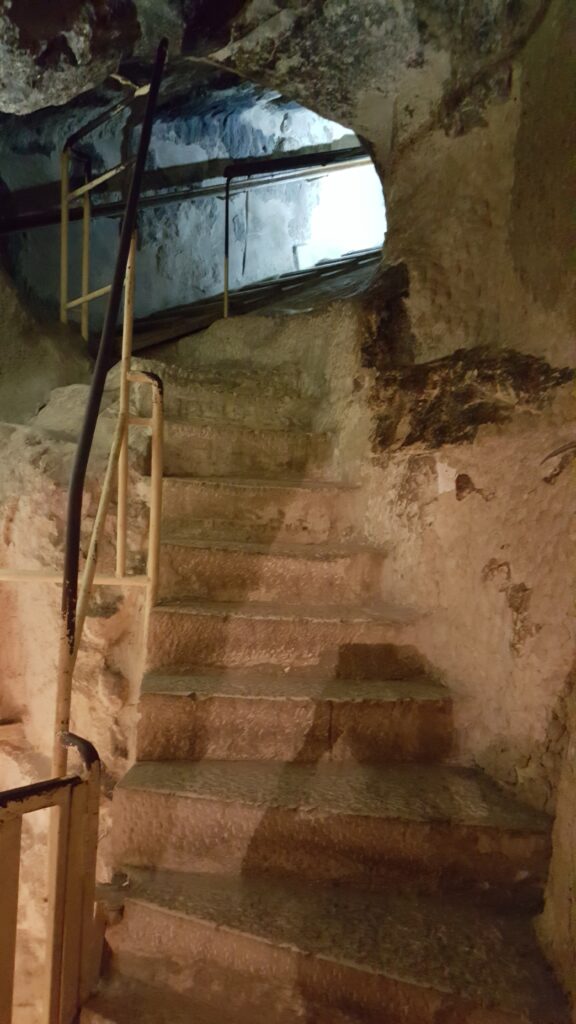
Our next stop was a twenty-minute drive from the pyramids to the most recognizable sculpture in the world. The Great Sphinx of Giza is a sculpture of a man with the body of a lion. It is 240ft long and 66ft high, carved from a single piece of limestone. It was called “Sphinx” by the ancient Greeks, as it resembled an ancient Greek mythical winged monster. The sphinx in Giza is more a guardian to the tombs of the pharaohs and is believed to have been built at the time of Khafre, the face resembling the pharaoh in his royal headdress. We gawked unashamedly.
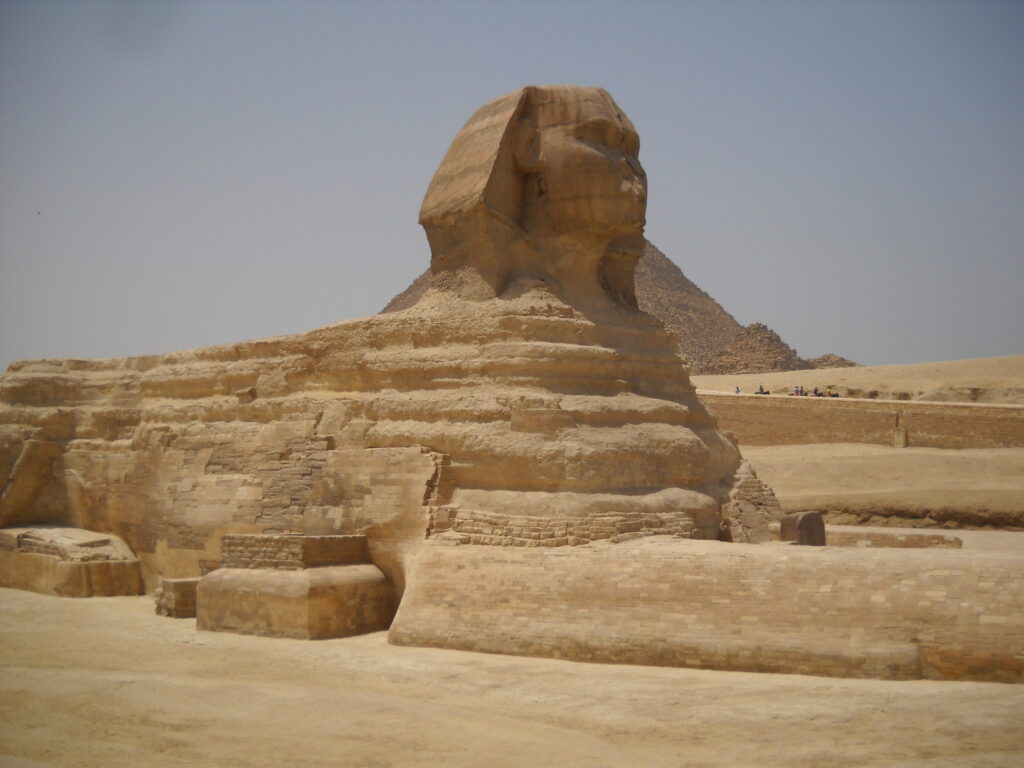
Our last halt was the wonderful papyrus museum where they gave us a demonstration of how papyrus was made. The museum-cum-shop had some lovely paintings on the various Egyptian gods and goddesses and pyramids. We bought a few and the girls got their names inscribed on their paintings in Egyptian hieroglyphs. They hang in our homes today as wonderful reminders.
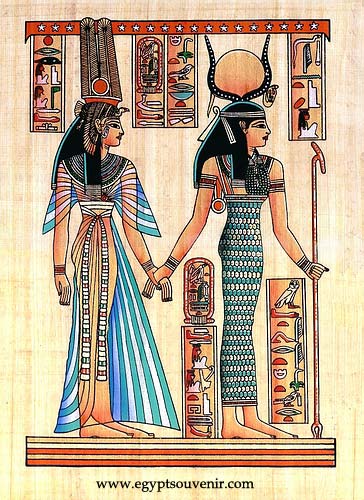
We left after an early breakfast (great spread!) at the hotel the next morning for Alexandria, the Mediterranean port city in Egypt. Founded by Alexander the Great, it was one of the greatest cities of the Hellenistic world and renowned for its library and its lighthouse built during the reign of Ptolemy II, one of the seven wonders of the ancient world. The great Nile, 6650 kms long and originating in Uganda, crossed 11 countries in Africa and emptied into the Mediterranean Sea, here in Alexandria.
On reaching the city after a 3-hour drive, we visited the Roman Catacombs where the people of Alexandria were buried according to their social status. Close by was Pompey’s Pillar, a Roman triumphal column over 25 metres high in honour of the Roman emperor Diocletian. There was a smaller sphinx in front of it. We walked around a small Roman amphitheater. The stones of the great lighthouse which was destroyed by an earthquake were used to build the Quait Bay Fortress which stood on the same site. We viewed it from the outside. We walked on the promenade by the beautiful, blue Mediterranean Sea, where smiling, friendly locals offered us tea. I searched for a single bust of the Alexander the Great as far as my eye could see, but in vain. It was a beautiful day nevertheless.
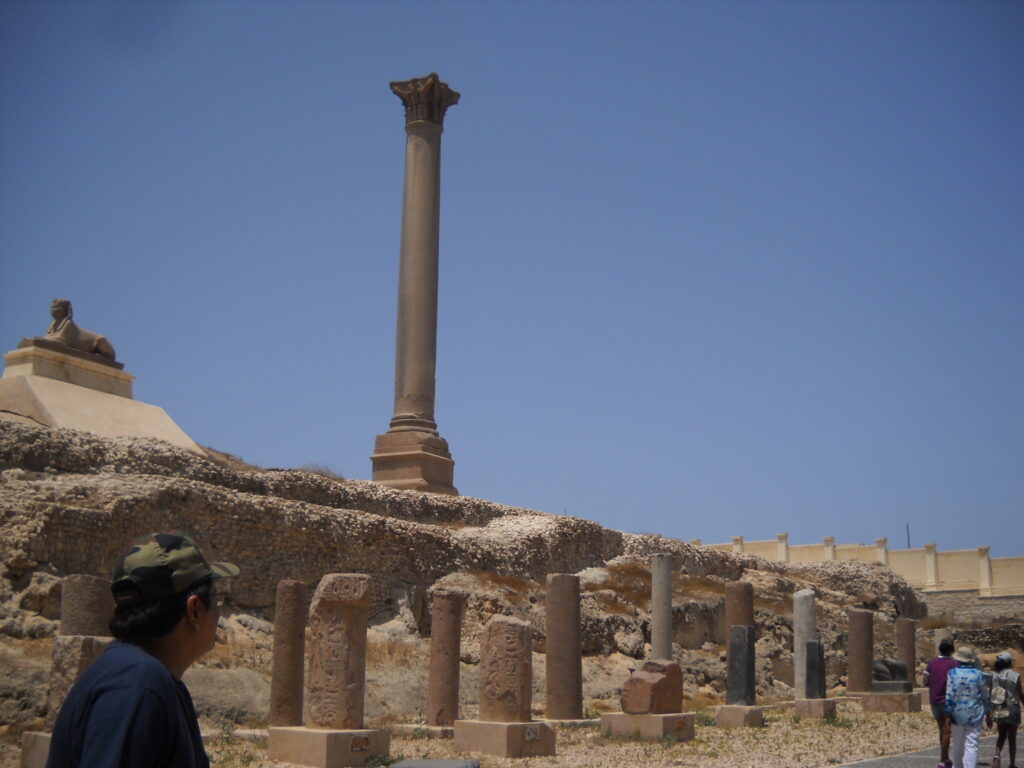
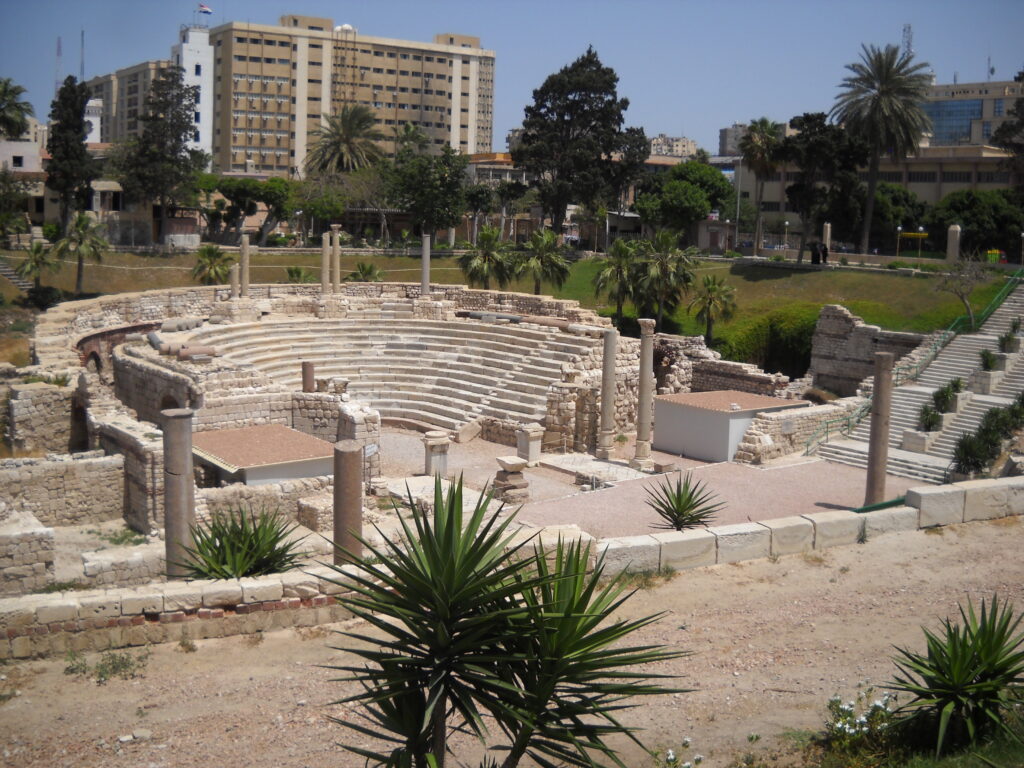
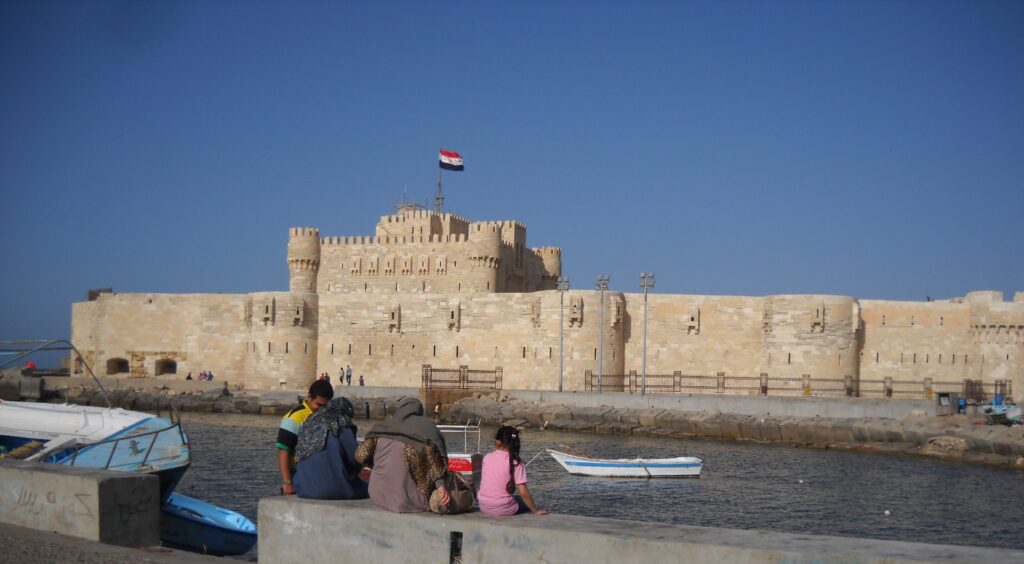
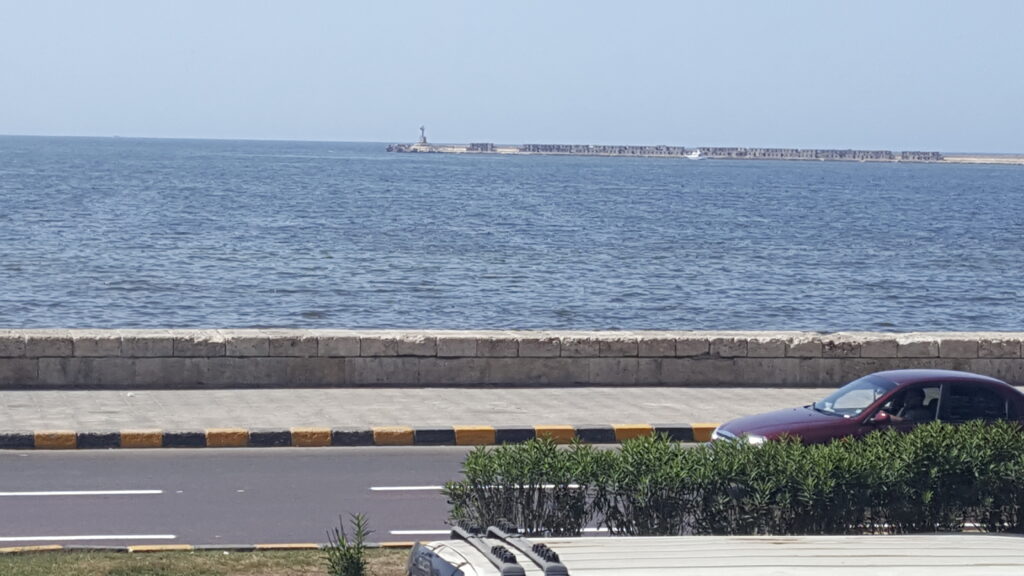
On the morning of day3 we left for the Egyptian Museum (the new National Museum of Egyptian Civilization was under construction then), which housed spectacular artefacts from over 7000 years of Egyptian civilisation. Our very knowledgeable guide and Egyptologist Yousef showed us how to read hieroglyphs inscribed under the busts of pharaohs and queens (we have now forgotten), what the stance of each sculpture meant, which rooms to visit in the sprawling museum etc. and then left us to explore on our own. Guides and cameras not allowed inside the museum, you see! We saw the famous Tutankhamen collection including his beautiful gold death mask that weighed 11 kgs and his pure gold coffin that weighed 110kgs. We also went into the Royal Mummy Room (my daughter stayed out with her grandmother) that housed the mummies of 11 pharaohs including that of the great Ramesses II and Queen Hatshepsut. There were also jars that preserved the blood and internal organs that had been removed (except the heart) during mummification, as they would have been the first to decompose. Brilliant!
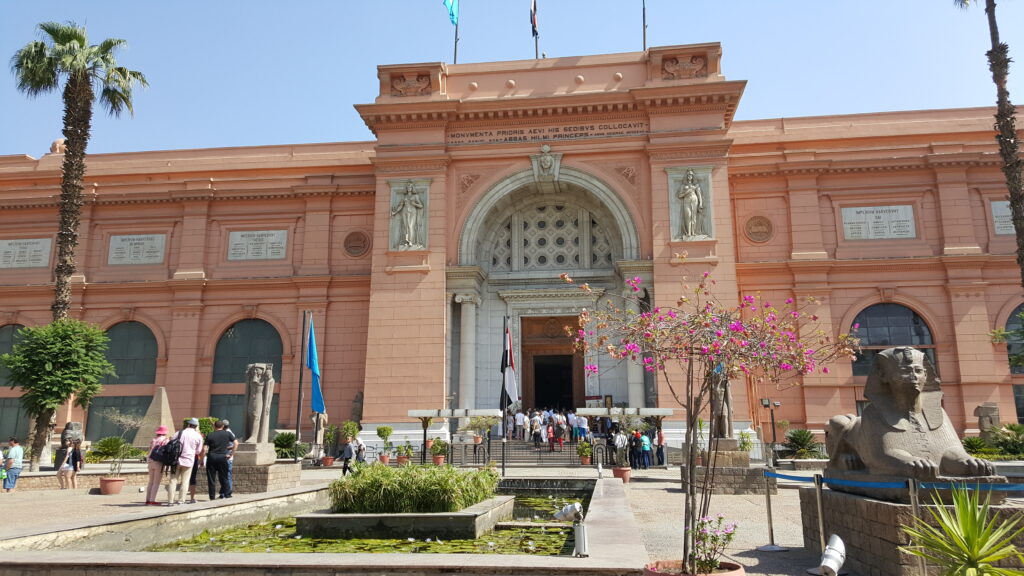
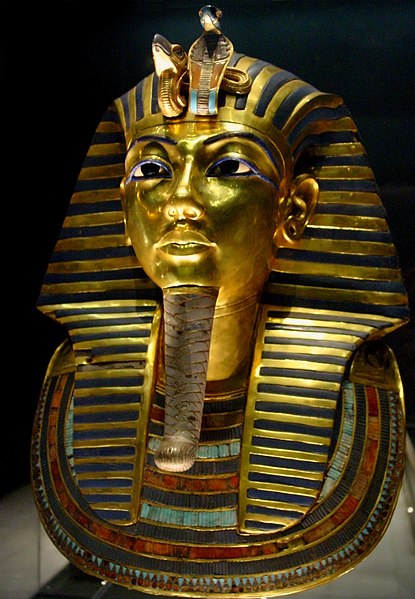

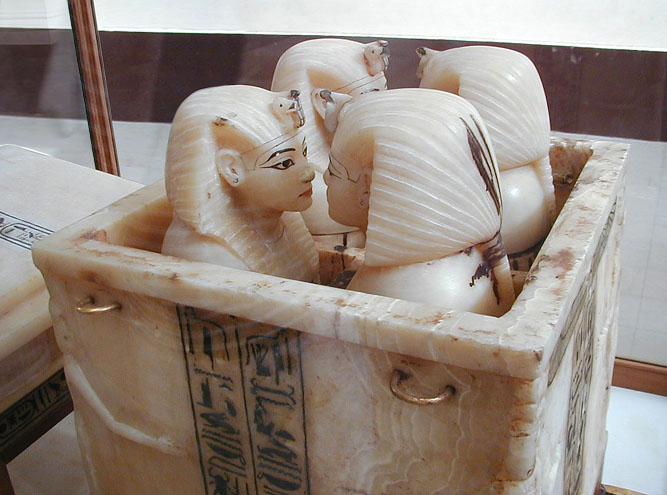
We left to visit the Mohammad Ali Mosque located in the Citadel in Cairo. It was spectacular inside! We climbed to the top of the Salah El Din Citadel and had a bird’s eye view of the city below. After perusing some artefacts in the National Military Museum there, we drove to the fantastic Khan El-Khalili bazaar for lunch and shopping.
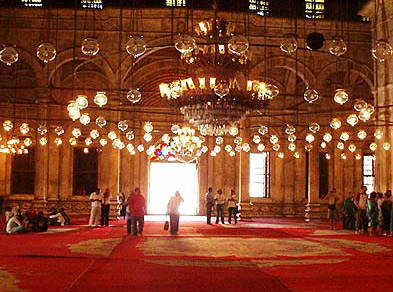
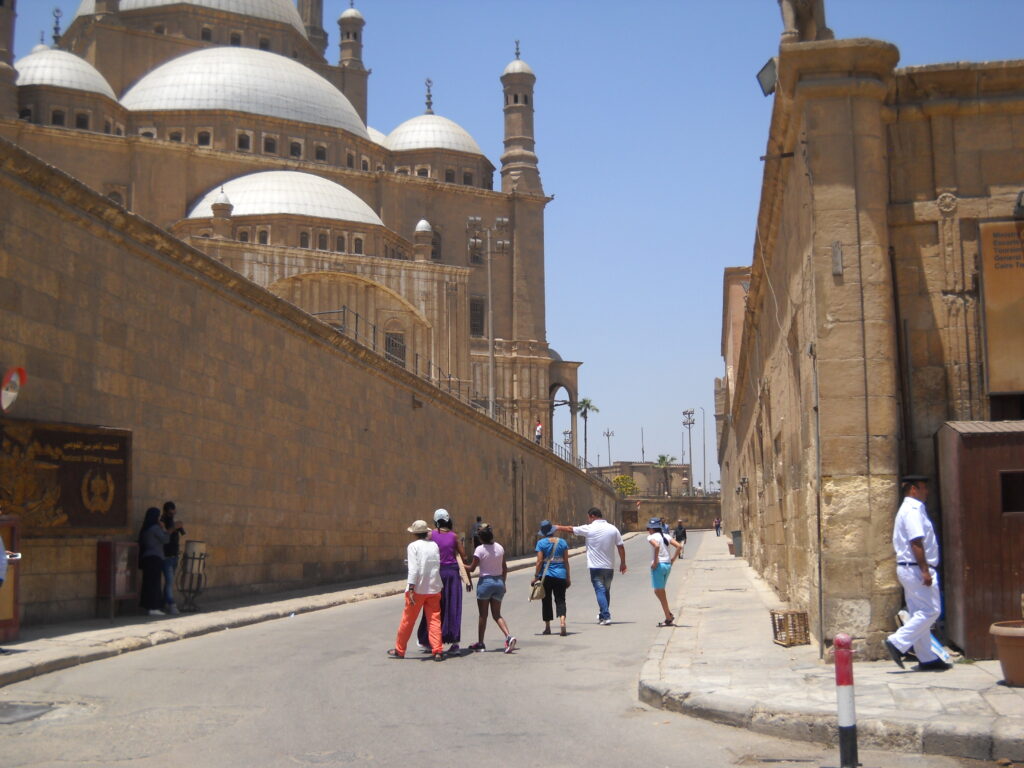
We flew to Aswan by Egypt Air the next morning and checked into the beautiful Basma Hotel. We freshened up and left with our guide Mina to the High Dam, one of the world’s largest embankment dams across the Nile in Aswan, built to control the flooding of the river and conserving water for irrigation and generation of hydroelectricity. There was also the Low Dam that had been built earlier. The building of the dam resulted in the creation of Lake Nasser, one of the largest artificial lakes in the world. It also flooded the tiny island of Philae in the Nile threatening its complete submersion, but the Egyptian government and UNESCO worked to rebuild the entire temple, stone-by-stone in an island nearby.
We went by boat across Lake Nasser to the Philae temple dedicated to the beautiful goddess Isis, her husband Osiris and son Horus. Our guide told us the story of Isis, whose husband Osiris was cut to pieces by his jealous brother Set and who was brought back to life by his wife, by her devotion to him. The story was carved on the walls of the temple. Isis was always depicted with a sun disc in between the horns of a cow as her headdress, Osiris in a white crown with curled ostrich feathers on either side, and Horus with the double crown or cobra. He was also depicted as a man with a falcon head.
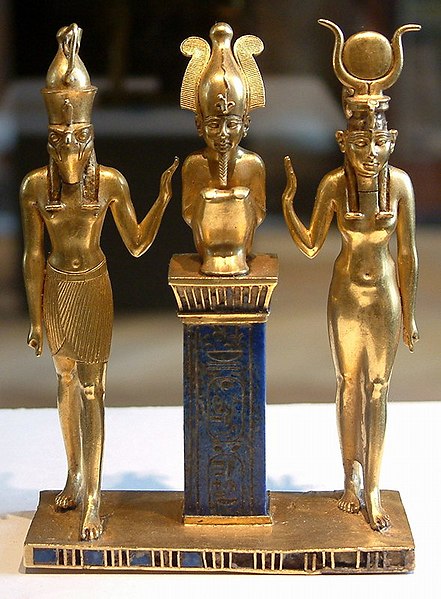
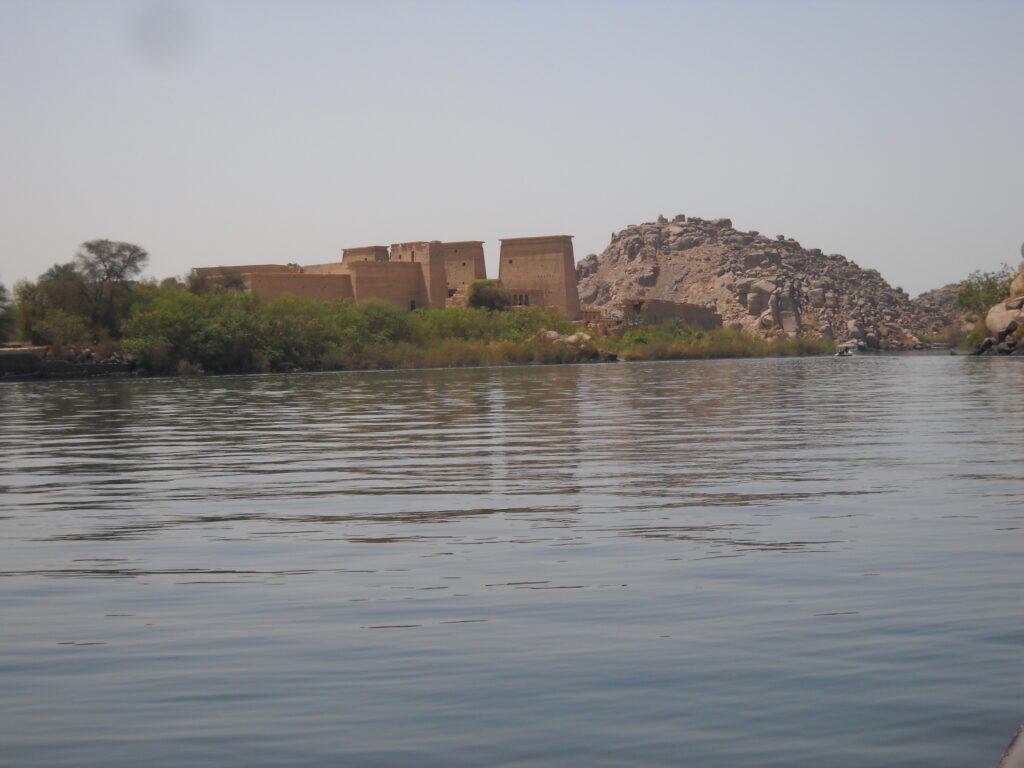
On the way back, we stopped at a quarry to see the Unfinished Obelisk, abandoned more than 3,000 years ago as the granite had developed a crack. It was commissioned by Queen Hatshepsut, and had it been completed, it would have been the tallest obelisk in the world.
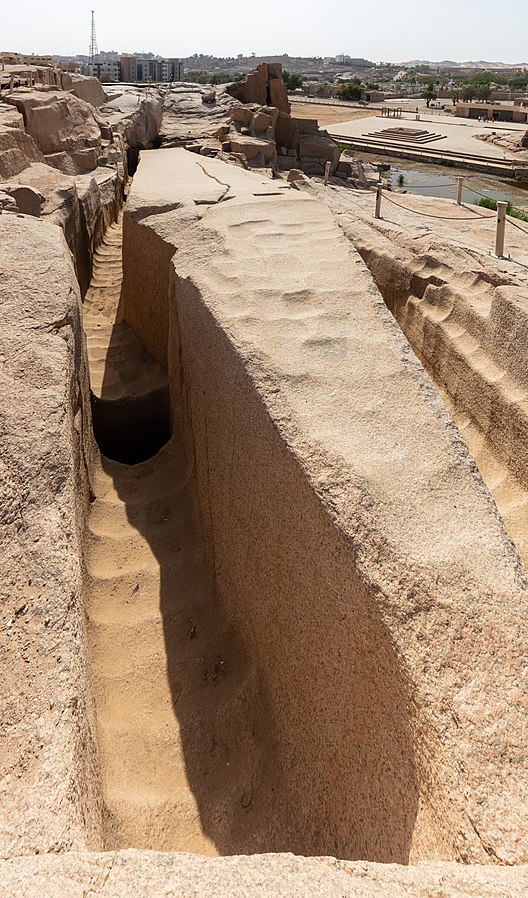
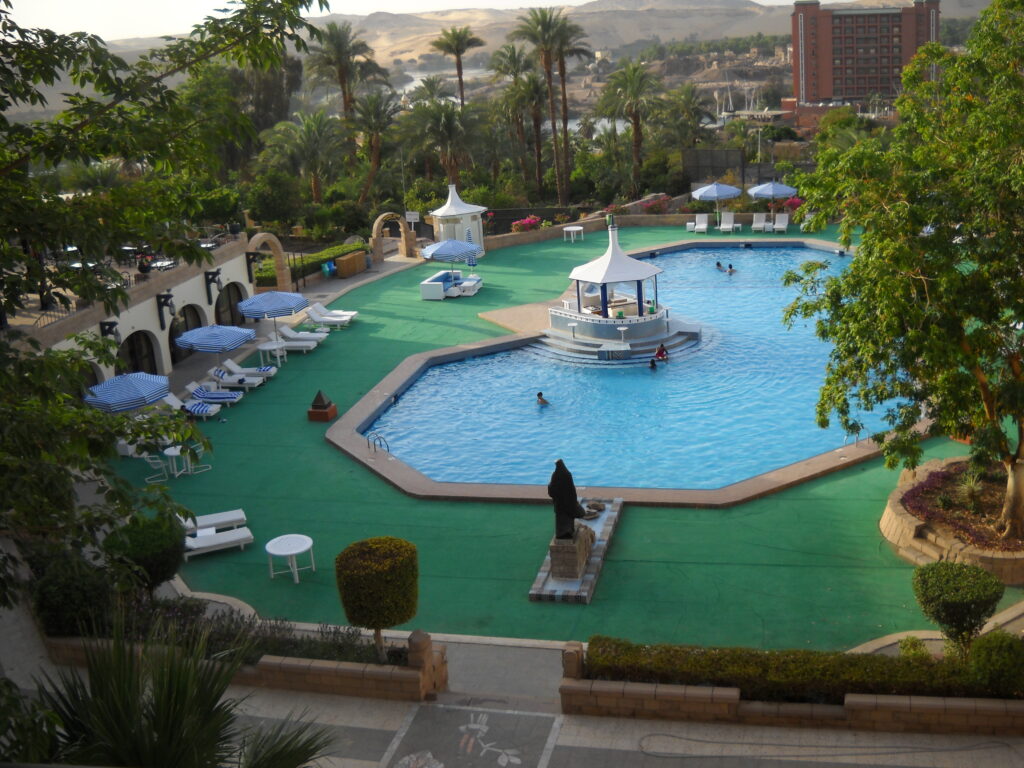
The next morning, day 5, we drove 250kms south of Aswan to the temples of Abu Simbel, overlooking Lake Nasser. The Sahara was a scorching 40 degrees Celsius. Carved out of the limestone mountain by Ramesses II (also referred to as Ozymandias in a poem by the same name by Percy Bysshe Shelley) sometime in 1264 BC, this stunning temple had 4 colossal statues of the pharaoh, each over 20 mtrs high (one was destroyed from waist upwards). At the bottom, smaller statues of the queen mother, his wife and some children were seen. Inside the temple were several sculptures of the pharaoh, his queen Nefertari, gods and goddesses. At his temple, where he sat with other gods, the sun would shine directly over him through a hole in the roof on his birthday, our guide informed us. The Abu Simbel complex also housed a smaller temple dedicated to his queen Nefertari. Of the six main statues outside, three were of the pharaoh alone. He certainly was not a modest one! Nefertari wore the headdress of goddess Hathor and her statue was the same height as that of the pharaoh’s, a rarity. It was spectacular, stunning! Not enough adjectives to describe this monument!
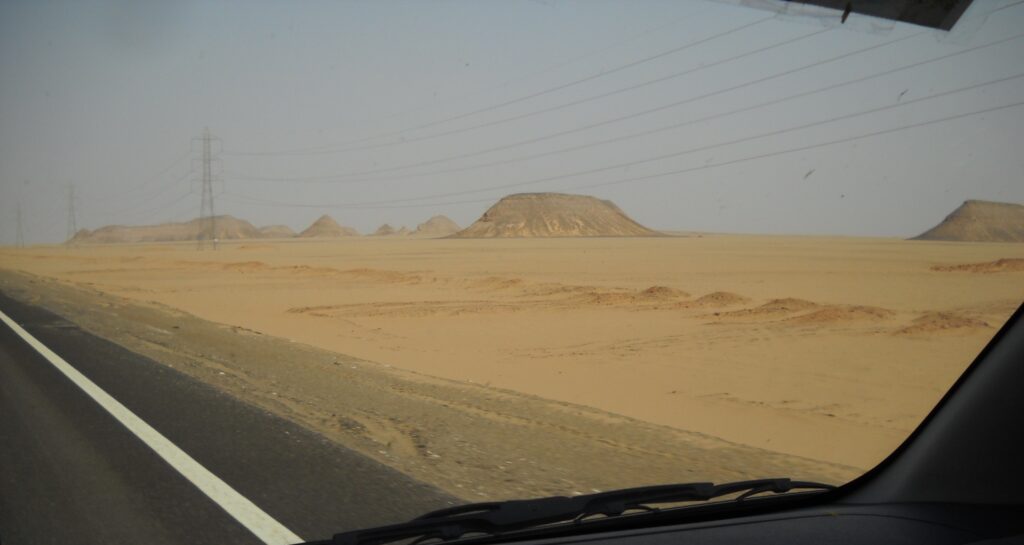
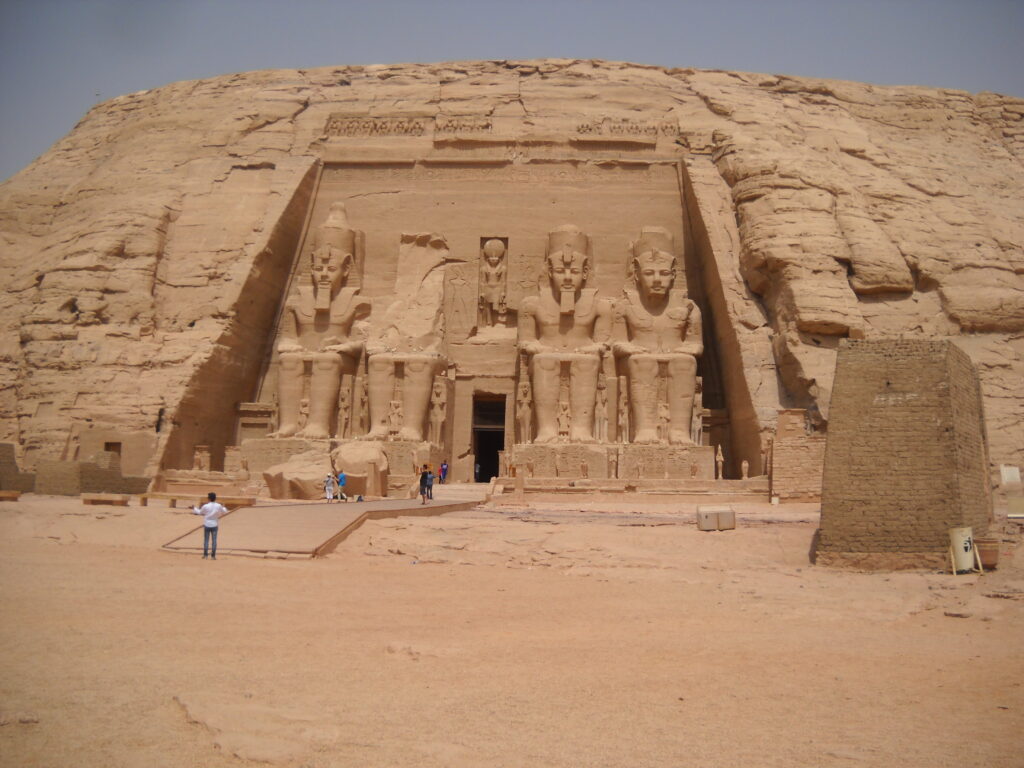
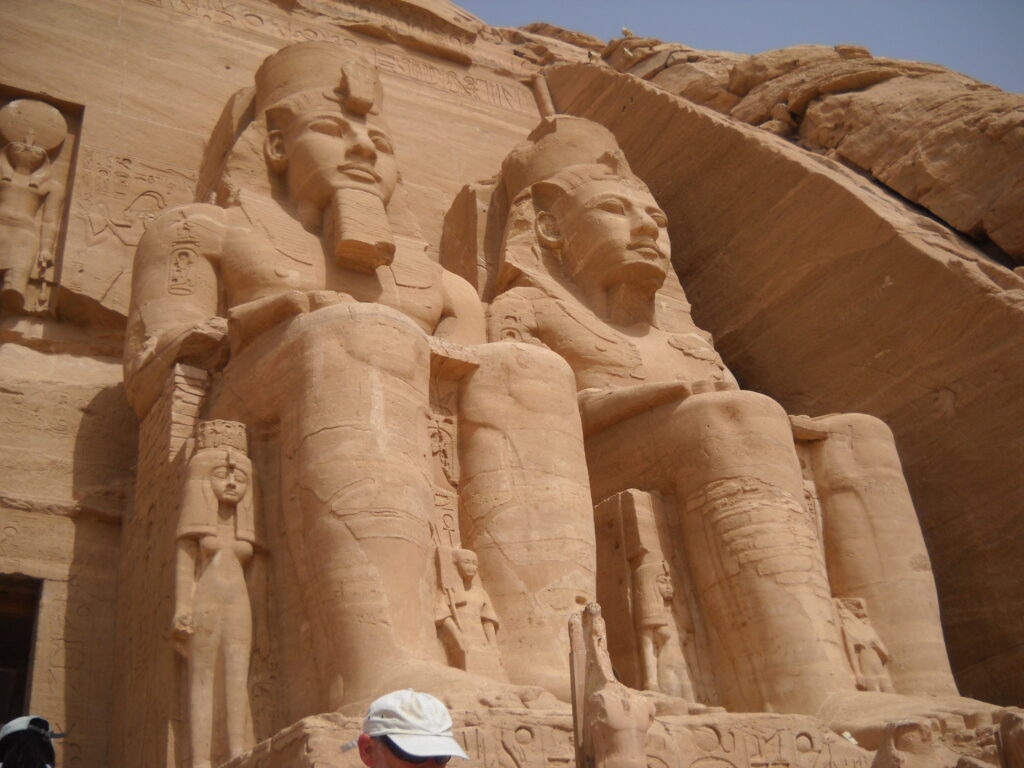
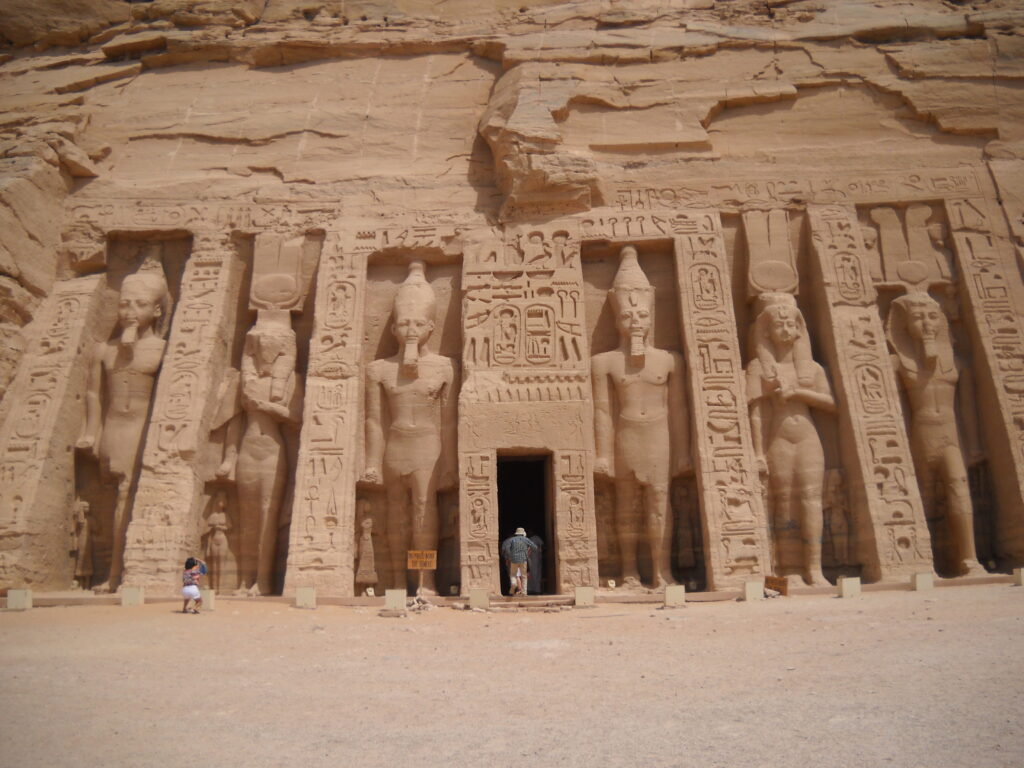
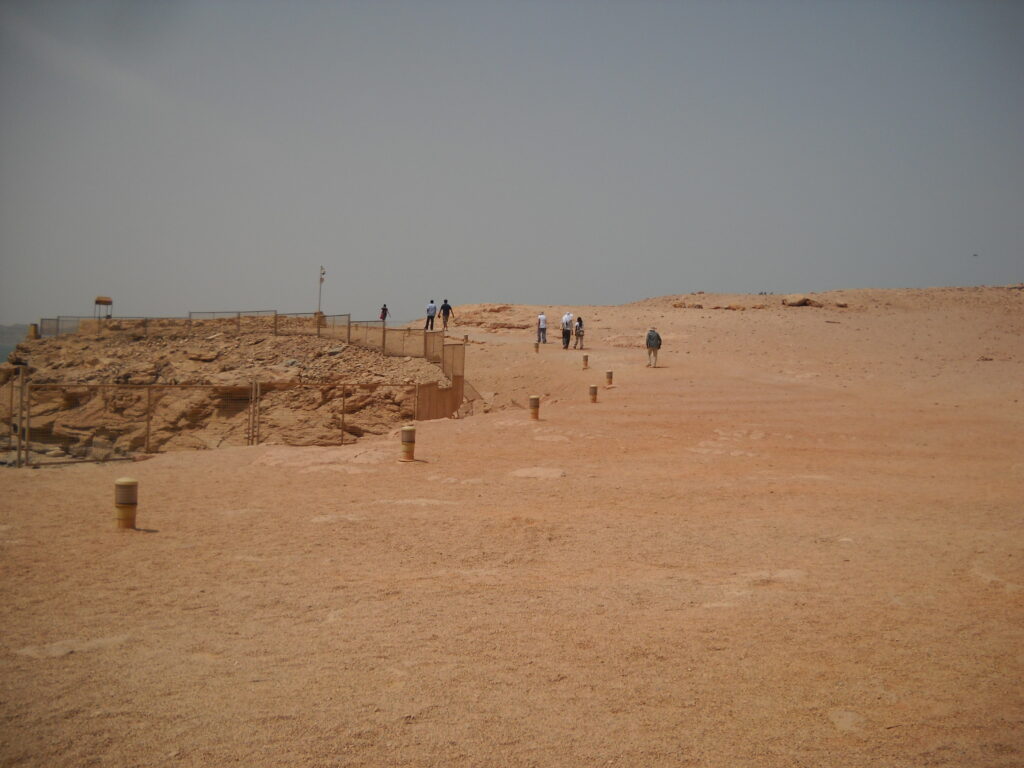
We packed and left for Luxor early next morning, a 350km drive through the awesome Sahara Desert. The great river Nile was with us wherever we travelled. The road was superbly tarred and soon we stopped at a roadside shop for some shots of lovely Turkish coffee. On the way to Luxor were 3 great temples Kom Ombo, Edfu and Esna. Built by the Ptolemys, the twin sections of the Kom Ombo temple were each dedicated to the crocodile god Sobek and Horus the Elder. Twin meant that there were courts, halls, sanctuaries and rooms duplicated for both sets of gods. Outside was a deep well supplying water to the temple, a crocodile farm and a museum.
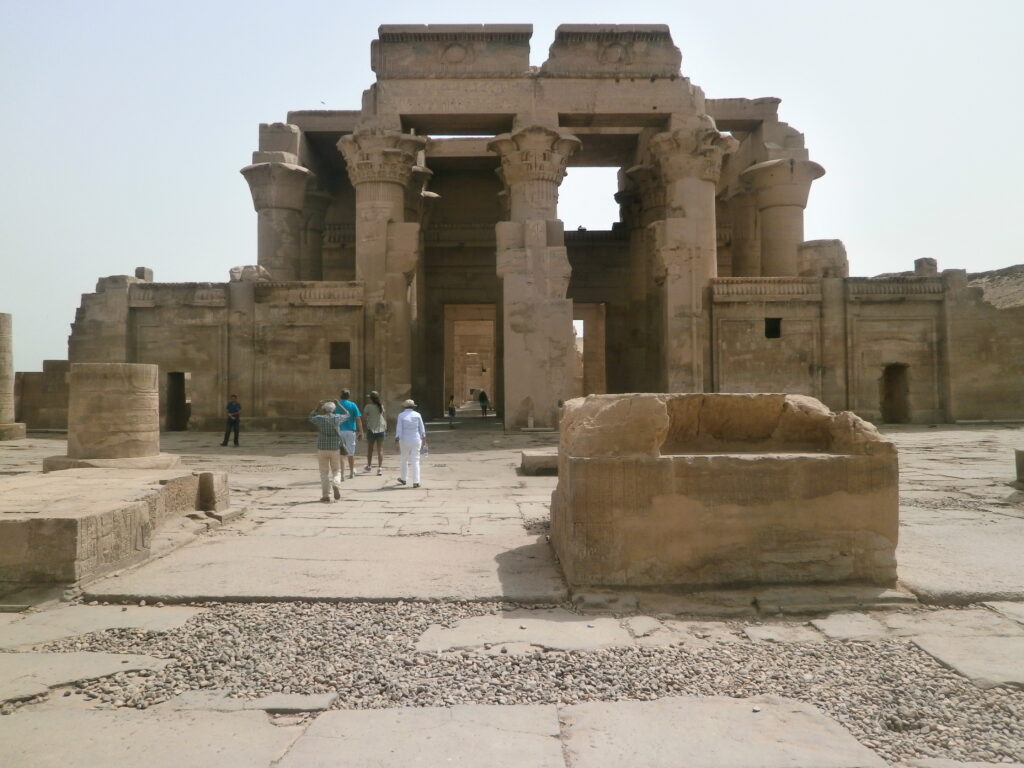
The Edfu temple was dedicated to the falcon god Horus. The temple was guarded by two granite statues of falcons. On the eastern side was a Nilometer in an underground passage which measured the level of the river Nile that helped predict the coming of harvest. We did not go to Esna, but proceeded on to Luxor. We checked into the beautiful Stiegenberger Hotel there.
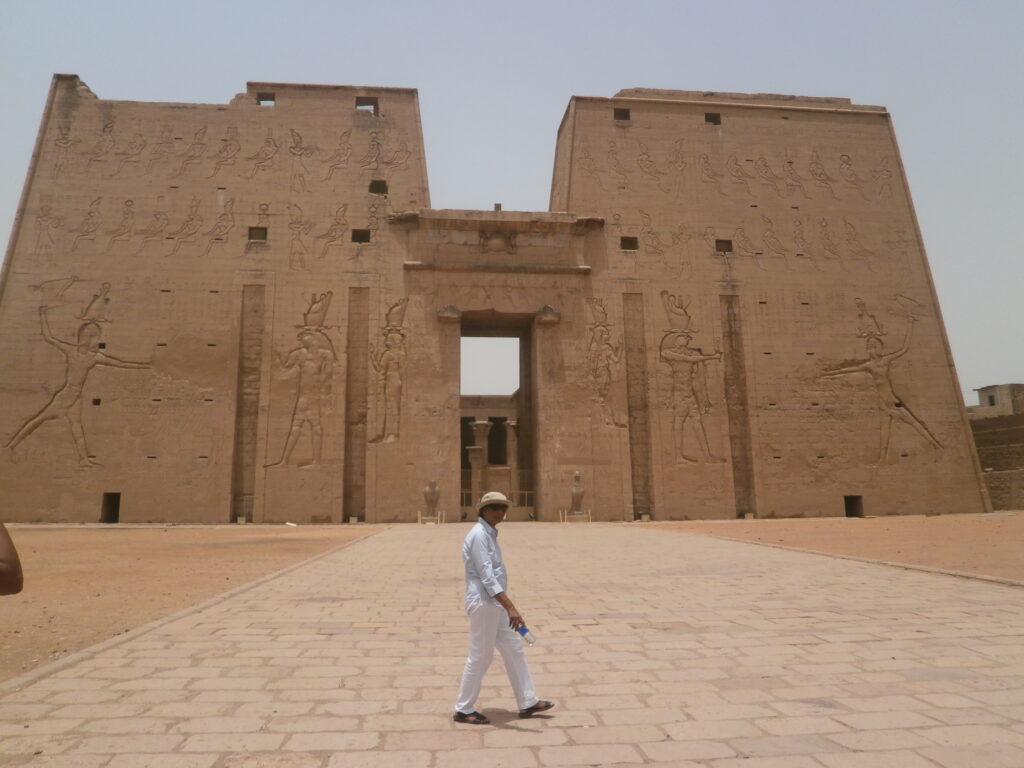
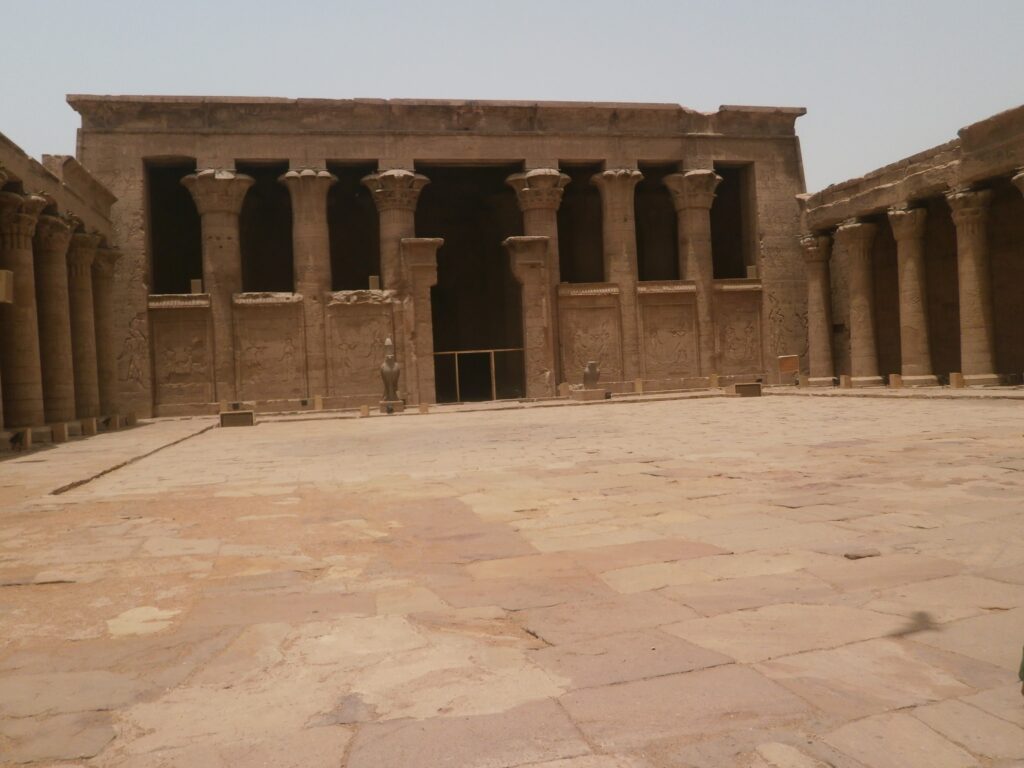
The morning of day 7 we drove to the famous Valley of the Kings, located on the West bank of the Nile river. It was part of the ancient city of Thebes and was the burial site of almost all the pharaohs from 1539–1075 BCE, from Thutmose I to Ramses X. A Japanese model at the visitor’s centre gave a perfect illustration of the valley. Of the 64 tombs, many were shut for repairs. We rode a small electric train to the tomb site. It was very hot and dry. The tombs were cut into rocks on either side with long sloping halls and burial chambers, beautifully decorated with carvings and paintings from their ancient texts. We saw the tombs of pharaohs Ramesses IV, Ramesses IX, Merenptah and Tutankhamun. The boy king’s tomb with its fabulous riches was discovered by the British Egyptologist Howard Carter in 1922. The mummy was placed near the tomb. Tutankhamun’s three coffins (innermost, middle and outer), his death mask and all other treasures were exhibits at The Egyptian Museum in Cairo. It was believed his mother-in-law, Queen Nefertiti, was also buried near his tomb, though not yet discovered. The building of such elaborate tombs with deep corridors and halls, all cut into the rocks of mountains staggers the imagination. Great civilization!
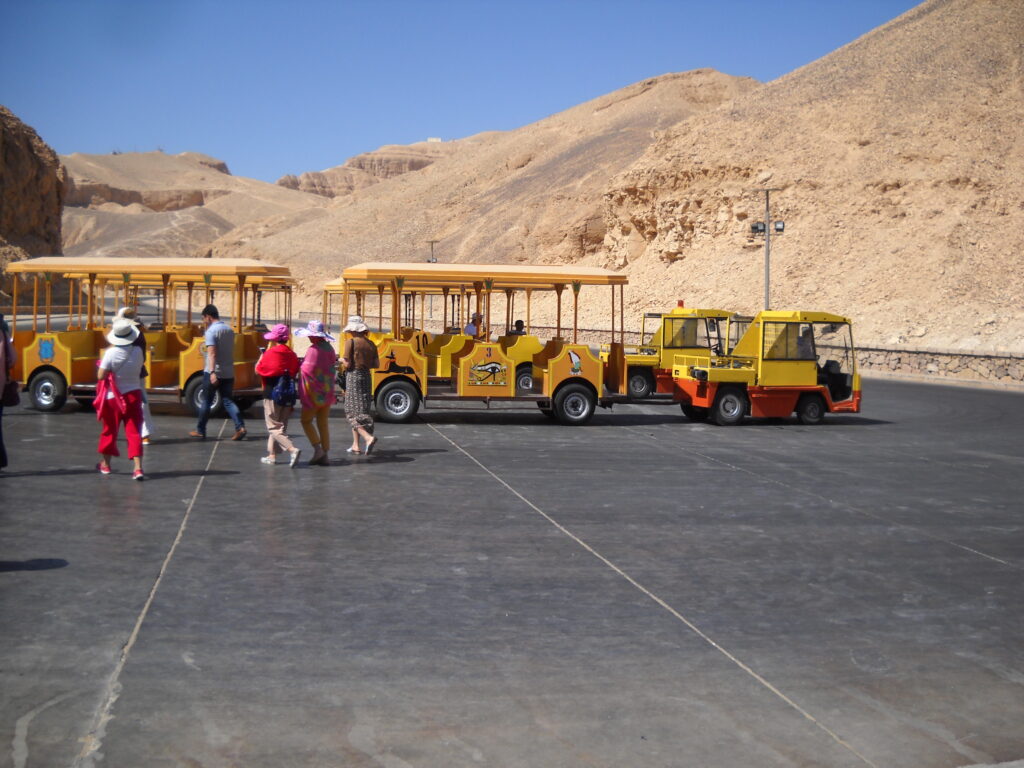
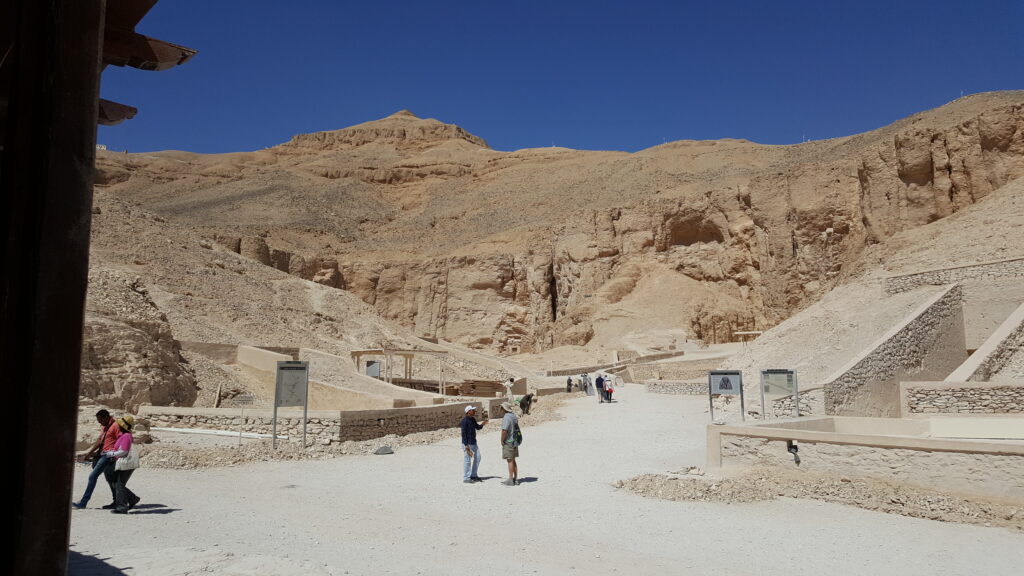
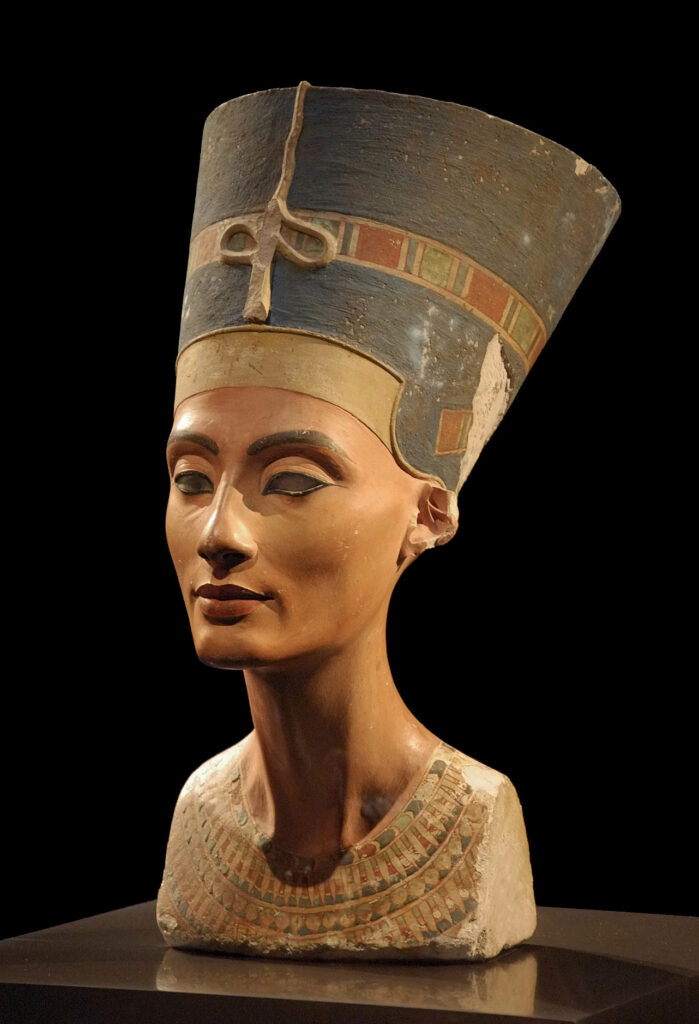
We next visited the dazzling memorial temple of Queen Hatshepsut (a pharaoh who reigned from 1479 to 1458 BCE), which lay at the foot of a rugged limestone cliff that rose 300mtrs above the desert plain. The temple blended beautifully with the cliffs in the background from which it had been carved. Brilliant architecture! A long sloping staircase led to the temple terrace. Most of the inside areas were damaged except for the cut-out reliefs on columns and many areas were closed for restoration. There were beautiful statues of the queen in pharaoh adornment. In order to establish herself in the Egyptian patriarchy, Hatshepsut took on traditionally male roles and was depicted as a male pharaoh, with physically masculine traits and traditionally male garb. Her reign was a period of great prosperity and general peace and she was one of the most prolific builders in Ancient Egypt.
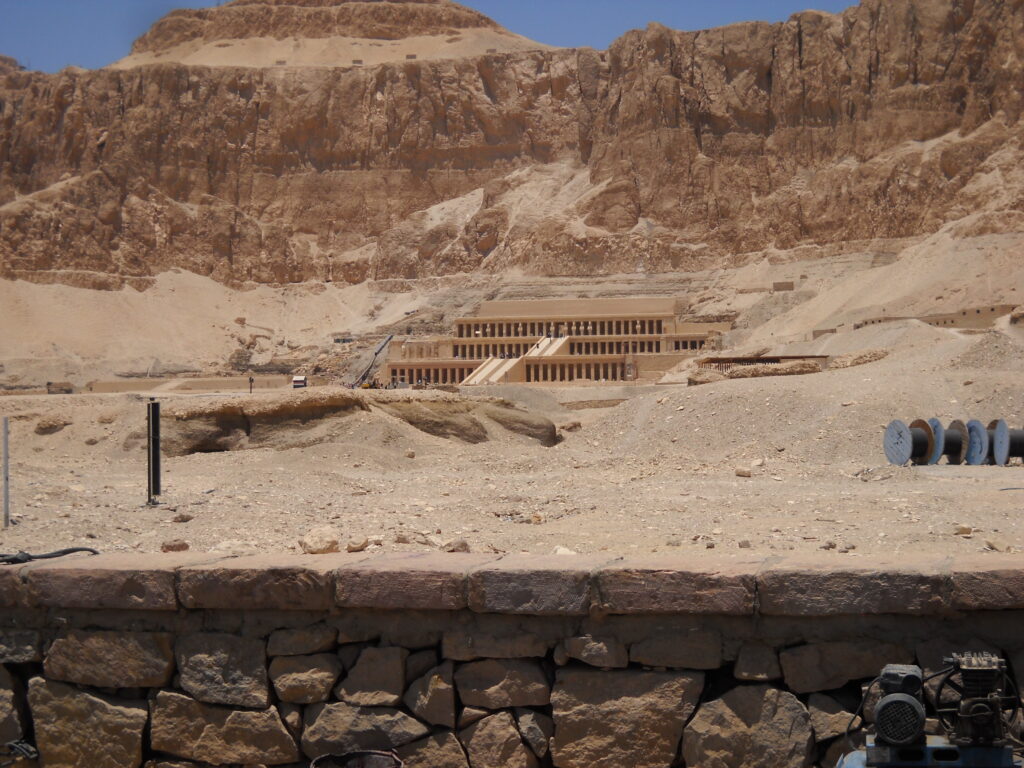
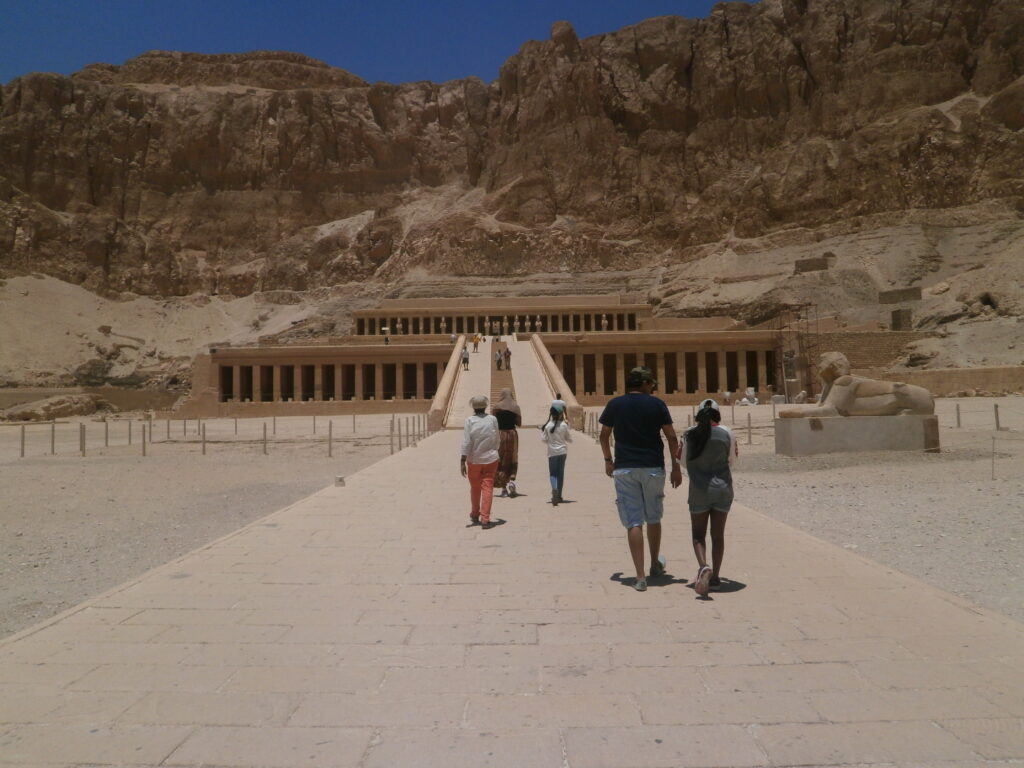
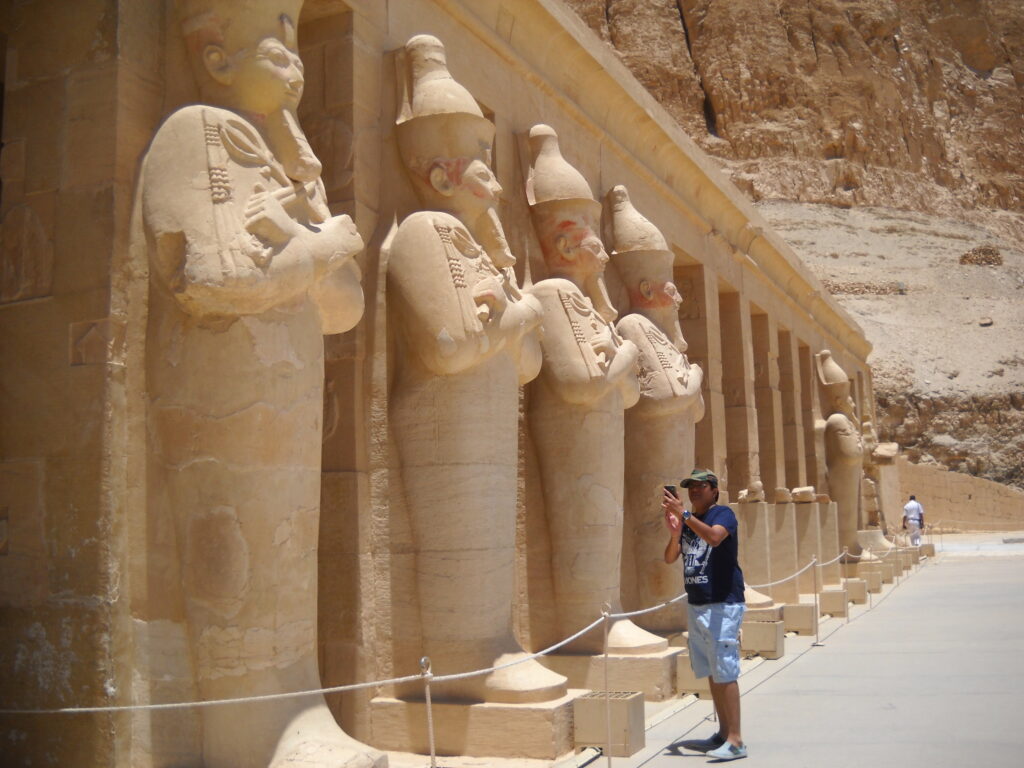
We stopped to see the Colossi of Memnon (1350 BCE), two gigantic, faceless rock figures representing pharaoh Amenhotep III in a sitting position. They were each about 18 metres high and weighing over a 1000 tonnes and cut from a single sandstone rock. Cracks on the colossi appeared probably from an early earthquake in 27BCE. The figures of the pharaoh wore the royal headdress with the divine cobra protecting his head. In the background were the destroyed remains of the funerary temple of the king. Even after 3300 years the impact on viewing them was stunning, awe inspiring!
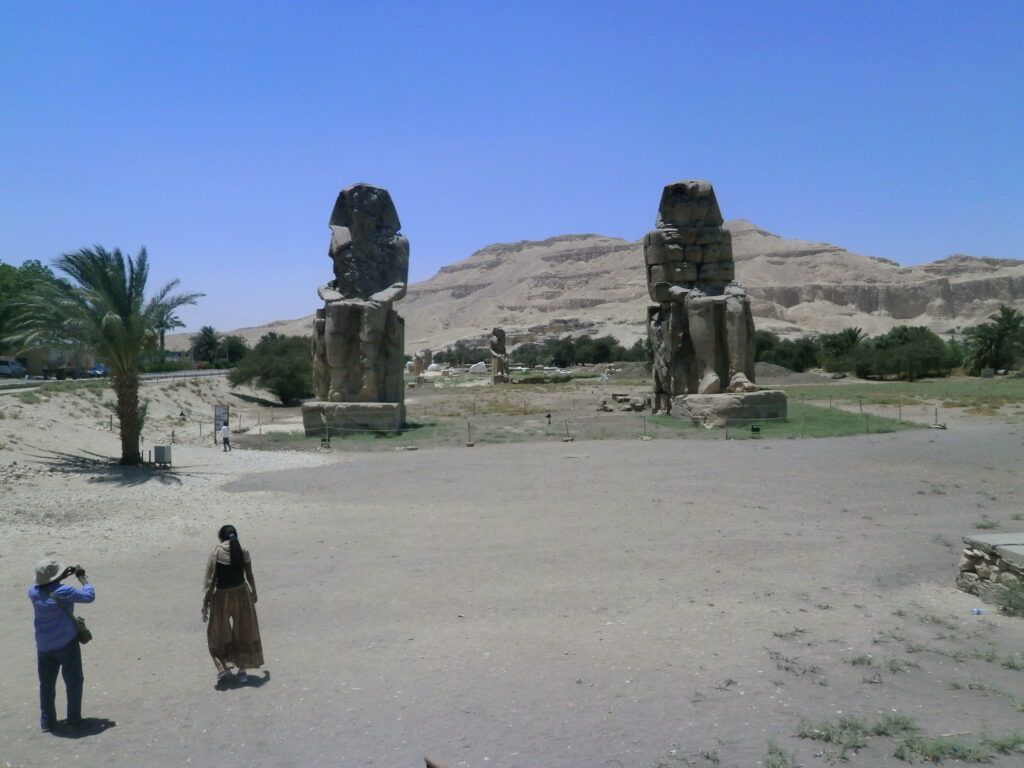
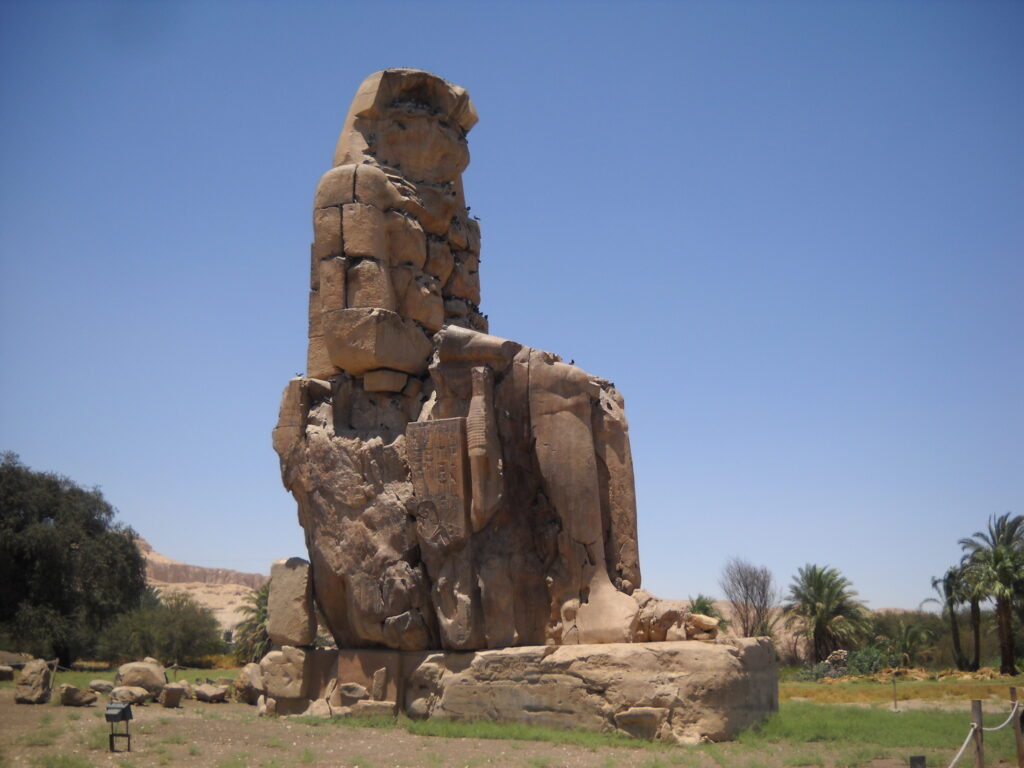
We continued to the temples of Karnak on the east bank of the river Nile, a huge complex of sanctuaries, pavilions, pylons and obelisks dedicated mainly to the great god Amon Ra. Queen Hatshepsut, a prolific builder, erected most of the structures during her time, but later pharaohs also contributed to the expansion of the Karnak and also the Luxor temple complexes. An avenue of sphinxes linked the Karnak temple complex to the Luxor temple complex. Many of the structures and obelisks built by Hatshepsut were destroyed after her death by her jealous step-son, Thutmose III, a great pharaoh in his own right. Ramesses II, Tutankhamun, Amenhotep III and later, Alexander the Great all contributed to the expansion of the Luxor temple complex.
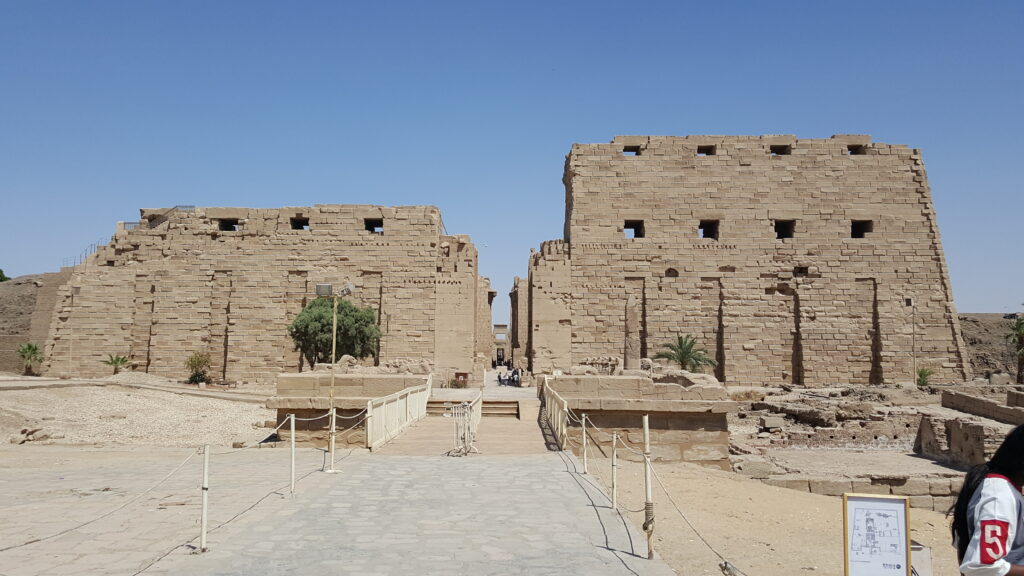
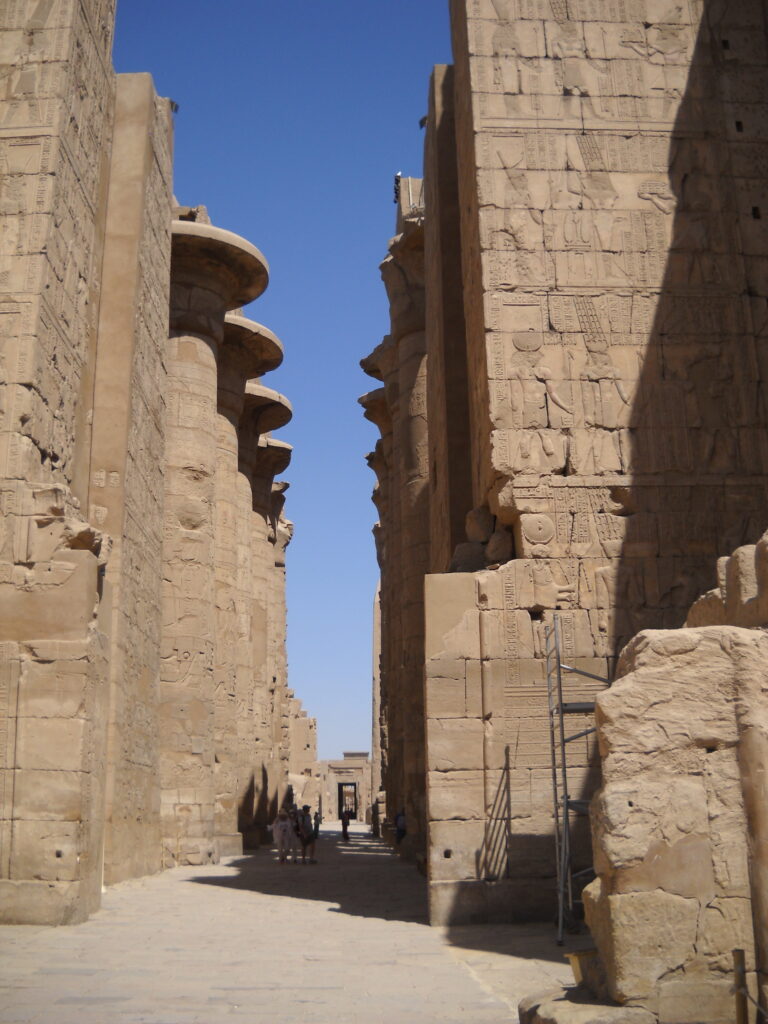
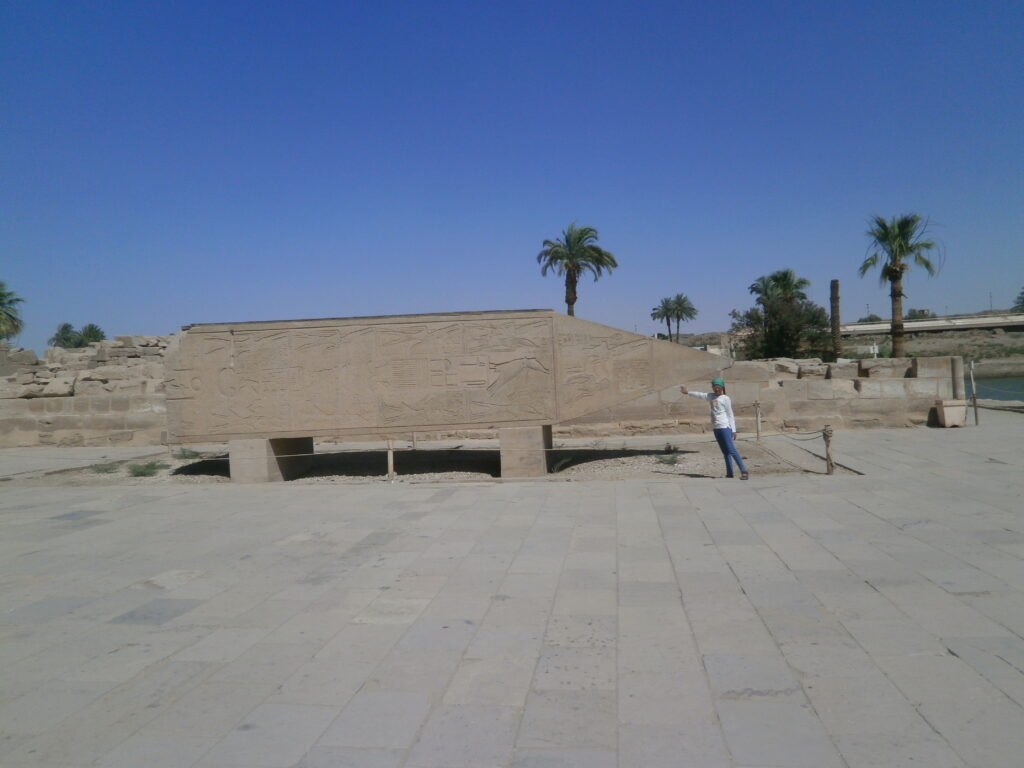
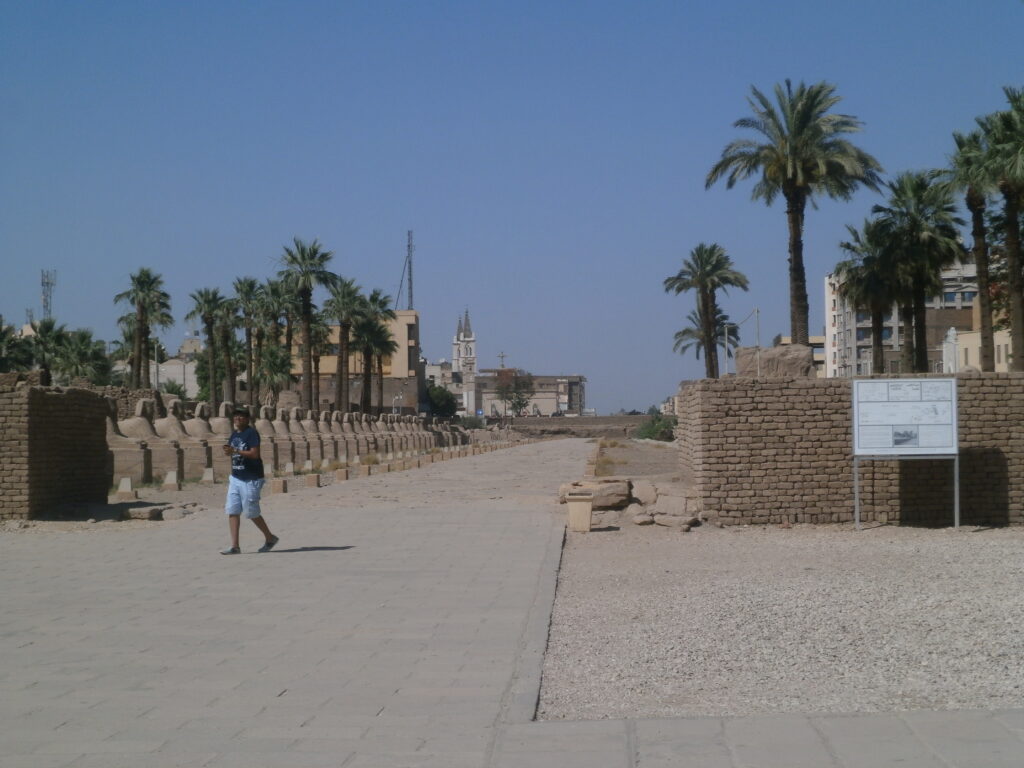
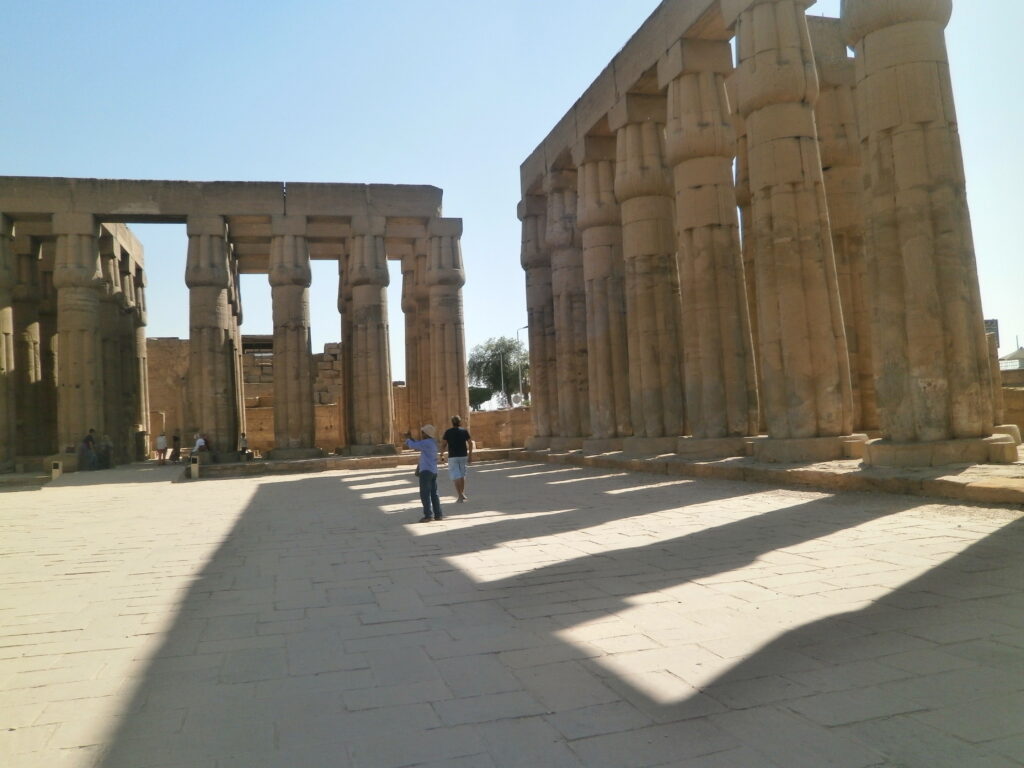
After breakfast on day 8, we left for Hurghada on the Red Sea coast, driving through some great scenery of the eastern Sahara Desert. We stopped at a brightly colored coffee house for Turkish coffee and cookies.
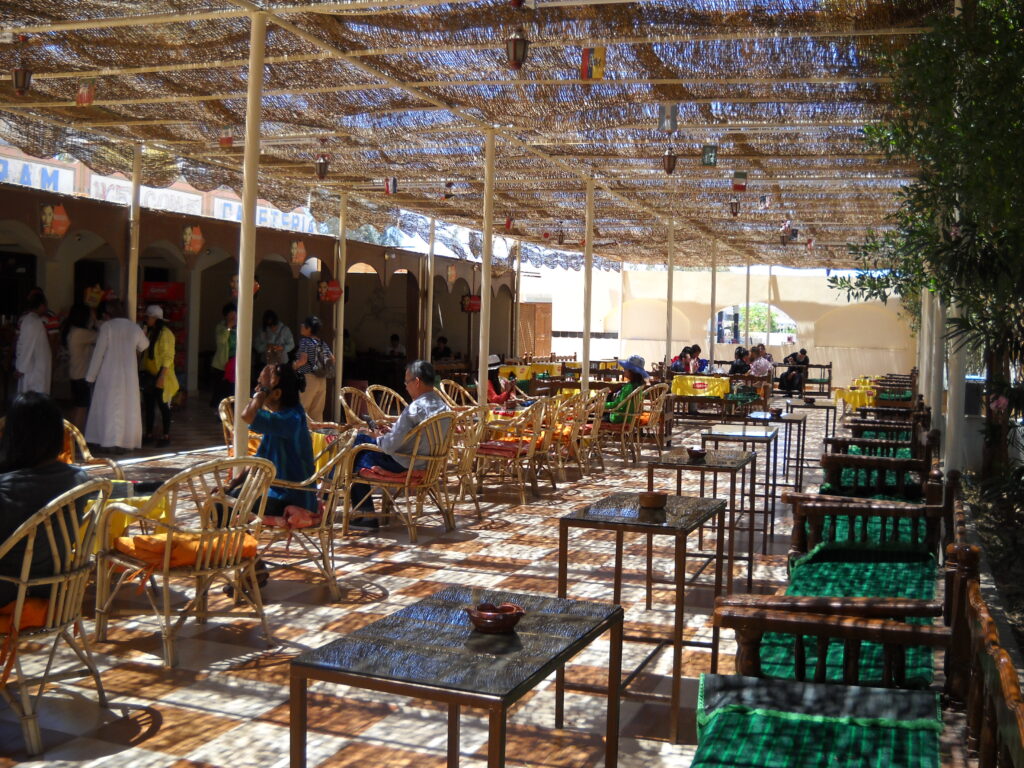

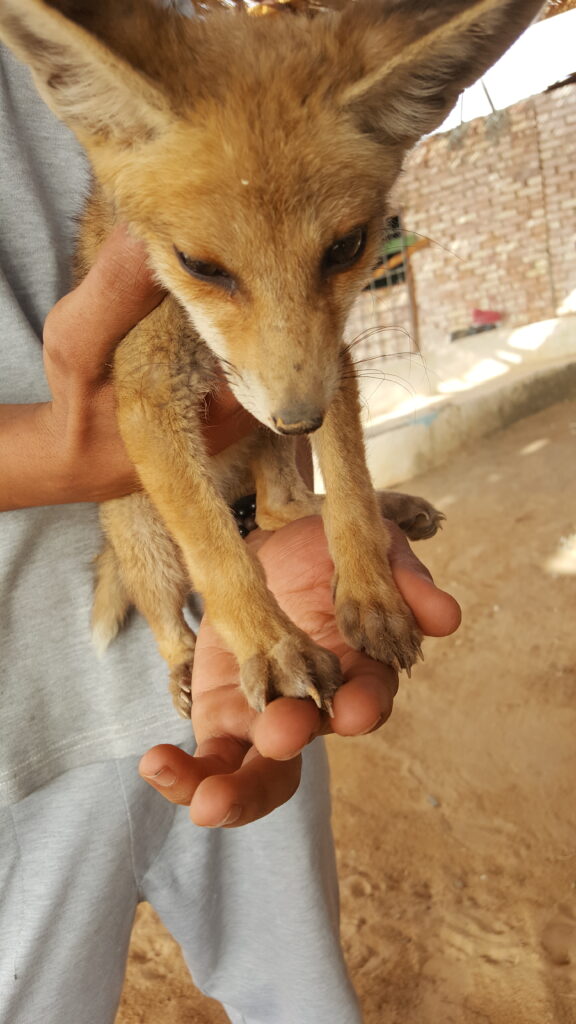
We checked into the Coral Beach Resort in 3 cottages overlooking the deep blue Red Sea. It was a lovely sight. Amma went for a long walk on the beach and stood close to the waves taking in the fresh sea breeze. Amma and Appa had been fantastic throughout: coping with the hectic pace of travel, the heat, walking long distances, listening and absorbing the lectures from the knowledgeable guides, and continuing to keep pace with the youngsters in the group. Unbelievable couple!
The next morning, day 9, saw us in a double-decker boat in the Red Sea. We were on our way to Paradise Resort for lunch and entertainment. Our day of thrills began with a ride on a banana boat at sea, an inflated cylinder on which we sat in a row and were pulled by a speed boat. It was fun being drenched by the waves while dashing madly through the sea! Then it was snorkeling time and we toppled into the sea with our life jackets and snorkels, going under to view a few corals and fish. Amma had hurt her ankle in the fall and my daughter was still scared, but we managed with the help of a diver. We landed on shore at Paradise Island where we relaxed under thatched umbrellas, were served lunch and entertained by a dervish and a lovely belly dancer. The girls were busy collecting sea shells near the shore with friends from the boat. All-in-all a fun day.
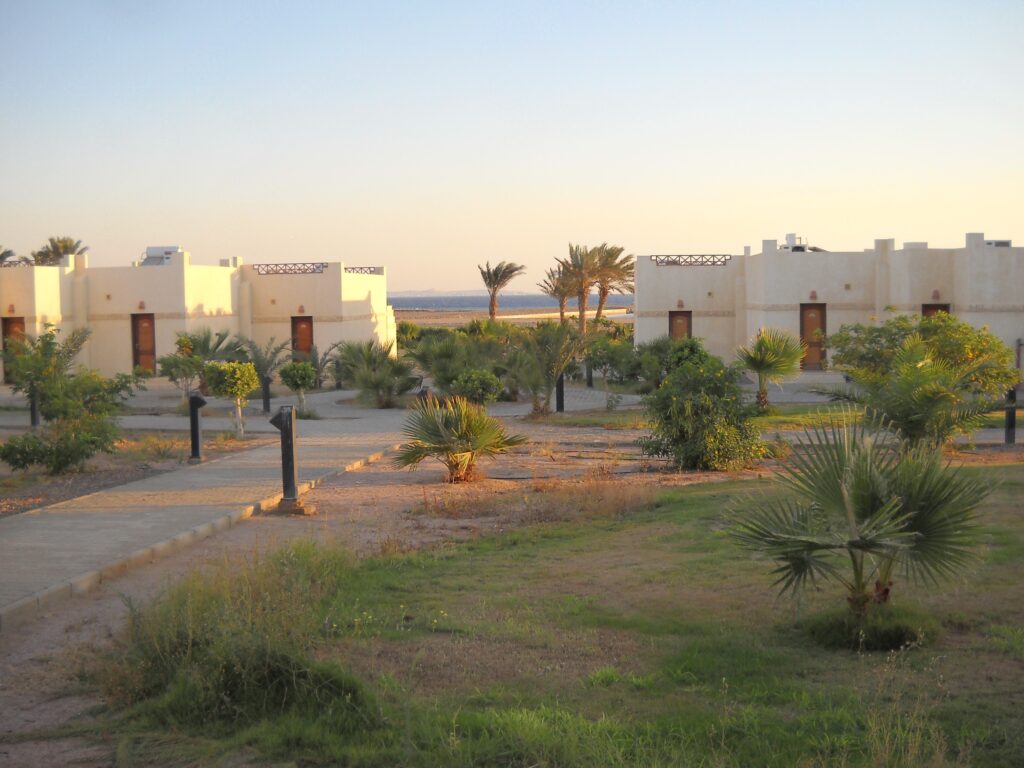
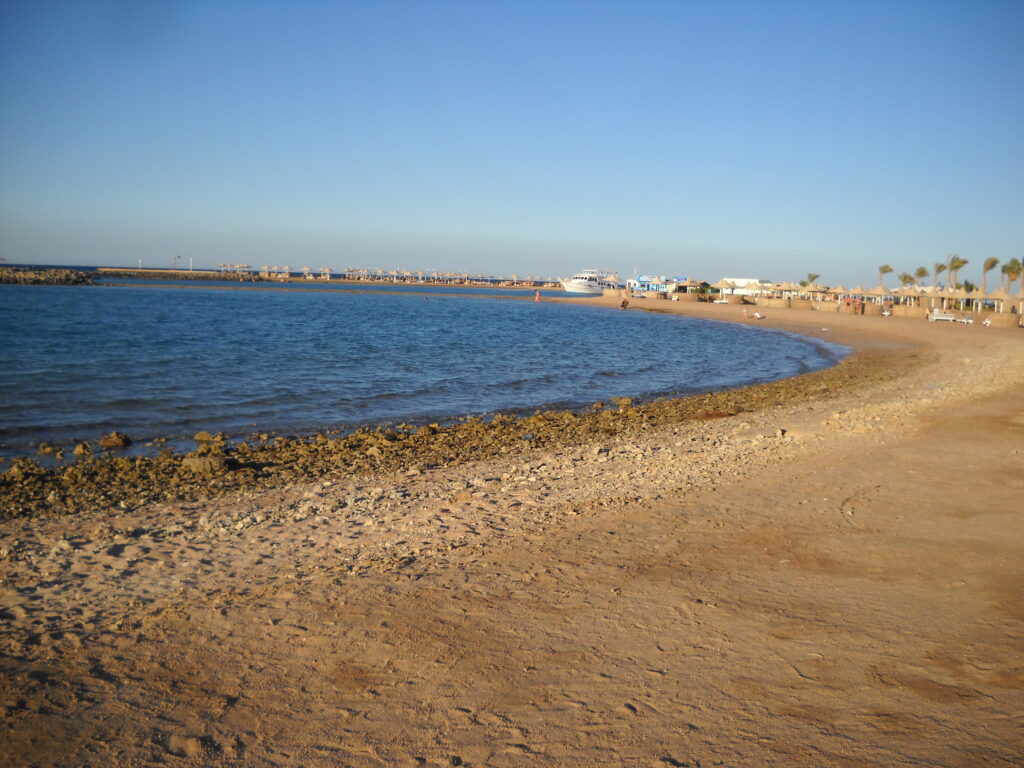
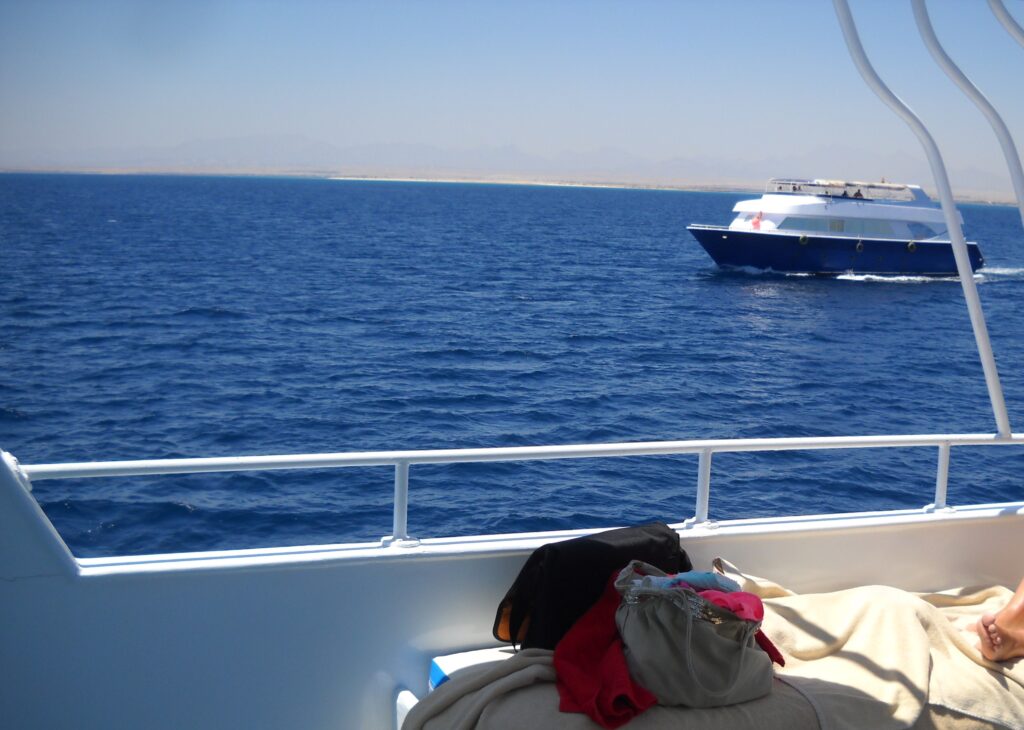
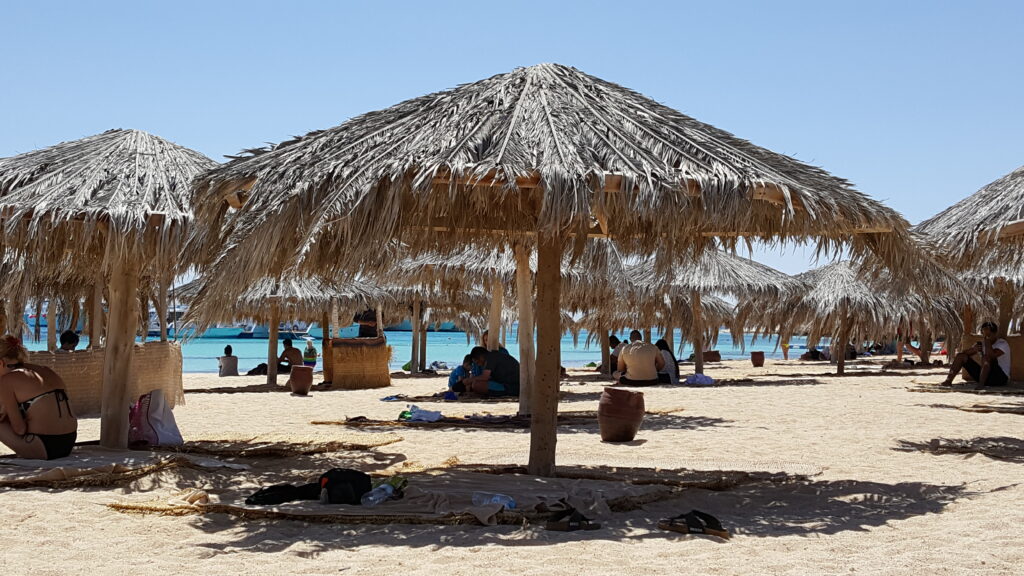
We flew back to Cario the next morning and checked into our hotel. It was to be our last day, so we shopped for Egyptian cottons and handicrafts. That evening we went on our final cruise on the river Nile, the life-giver who was with us throughout our journey in Egypt. It was nostalgic. We floated gently in the river, taking in the beautifully lit city and feeling the pain of parting after so many memorable days there.
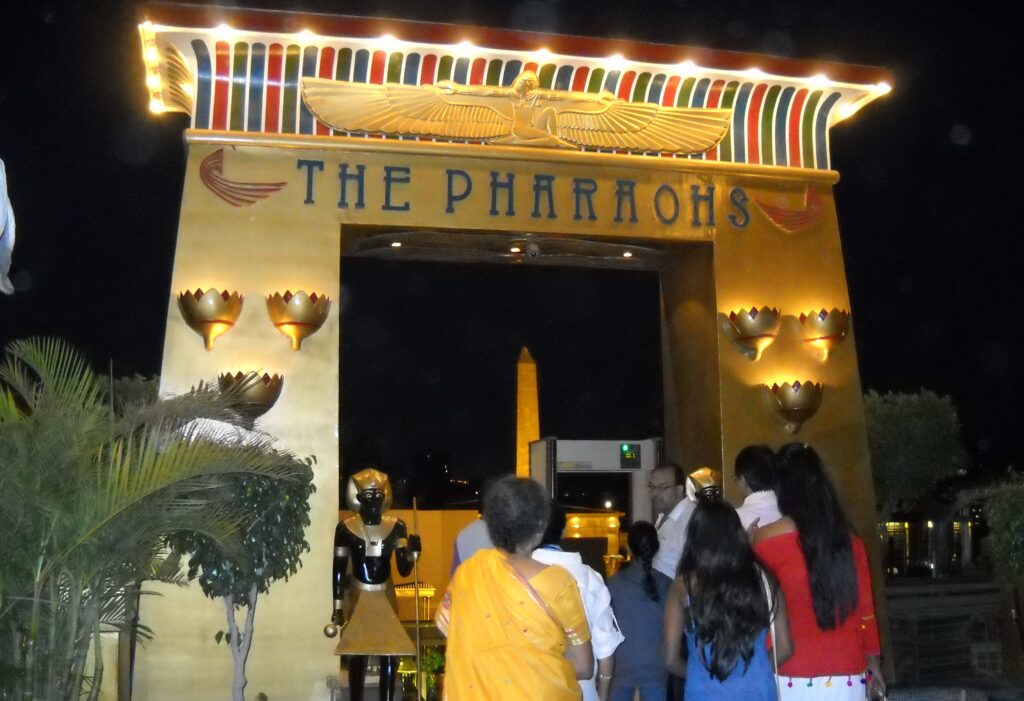
The next day we bid goodbye to our wonderful friends from Sakkara Tours, Mina, Marcus, Yousef, Adil and other experienced and knowledgeable guides who had made this whole trip an experience of a lifetime. My smiling brother was there to greet us at Mumbai airport. As always, Appa went to the Ganesha temple and broke a coconut in gratitude for our safe return.
Leave a Reply